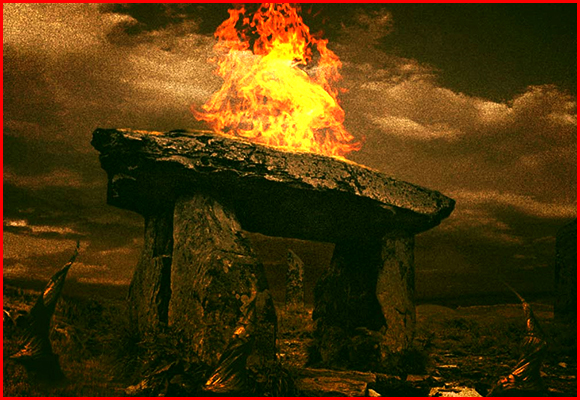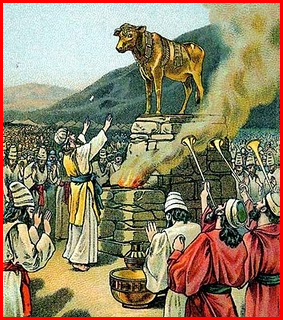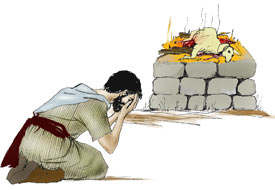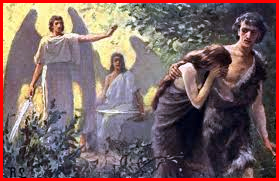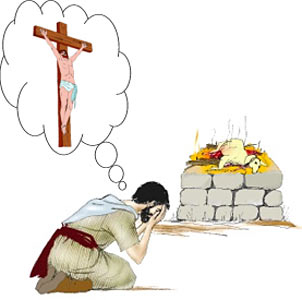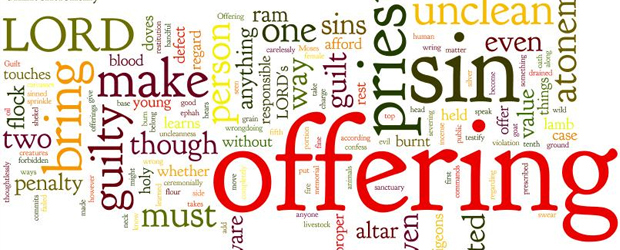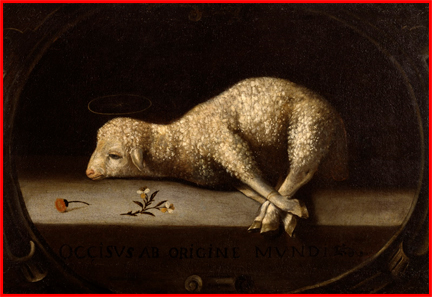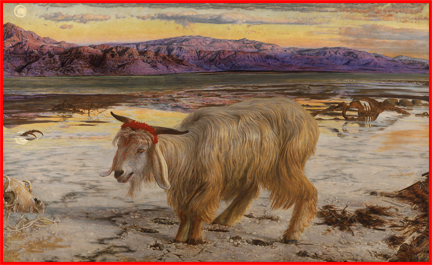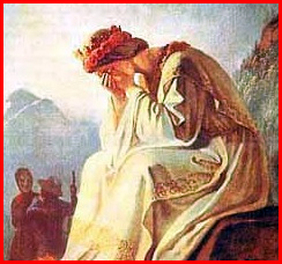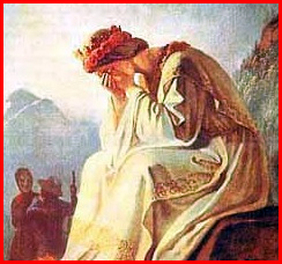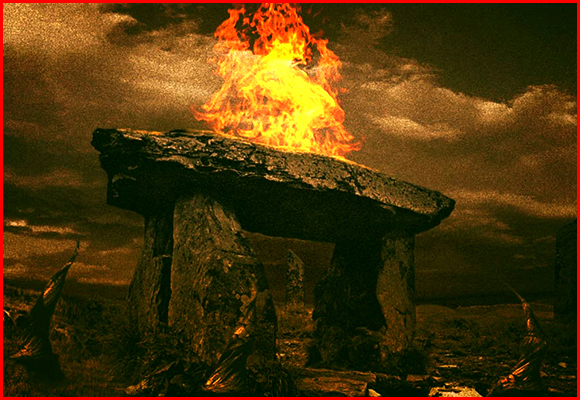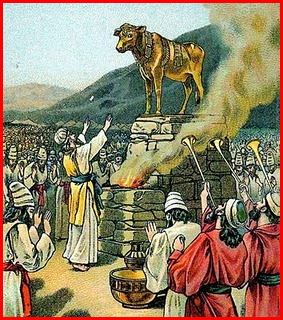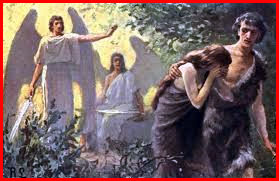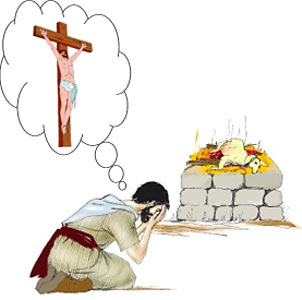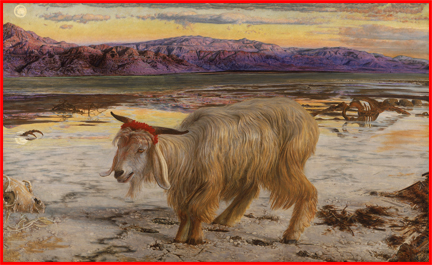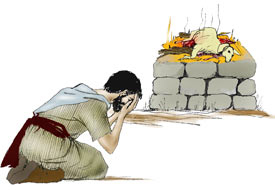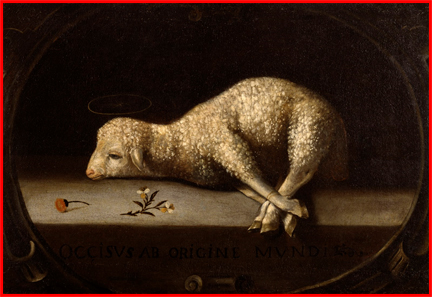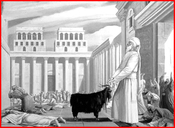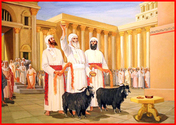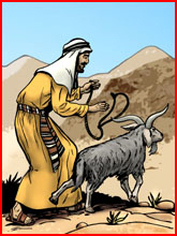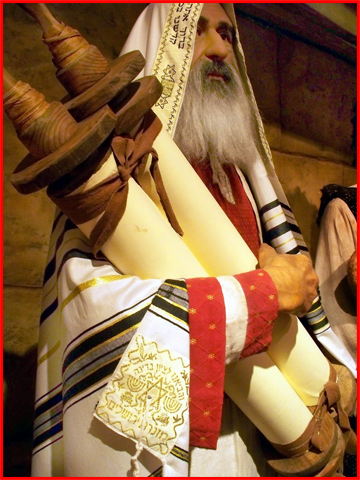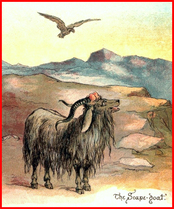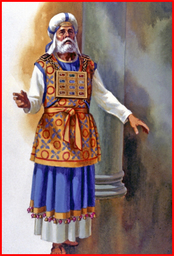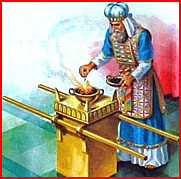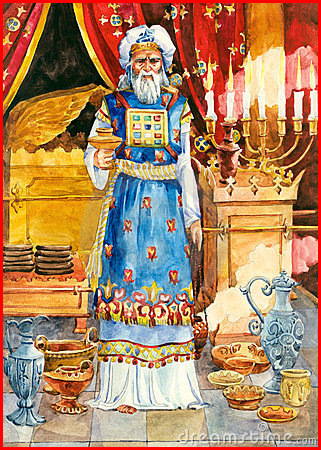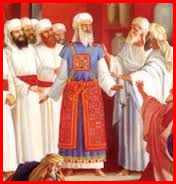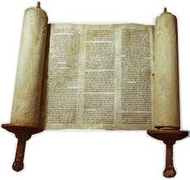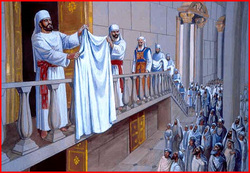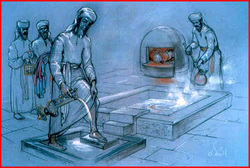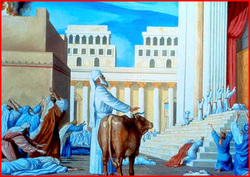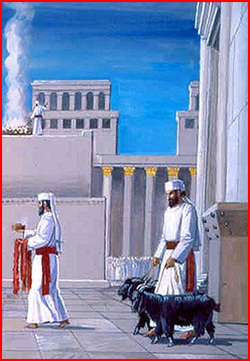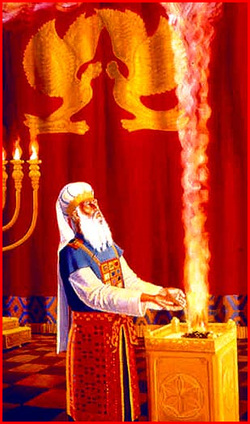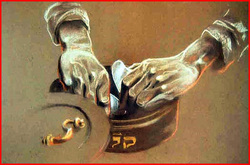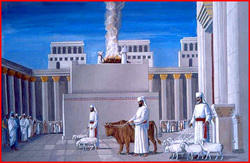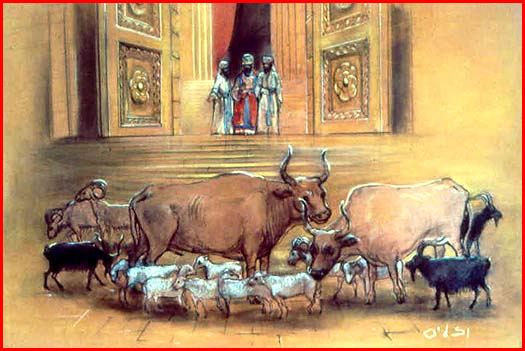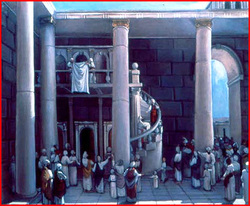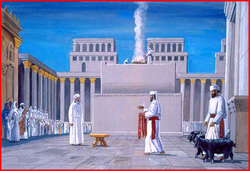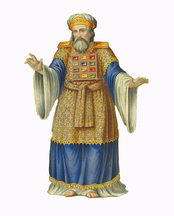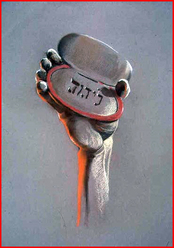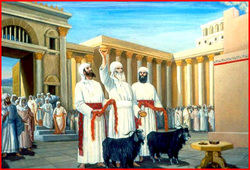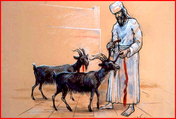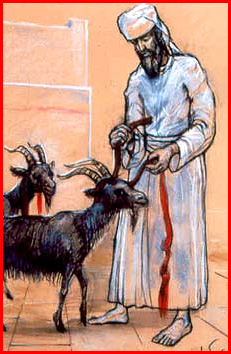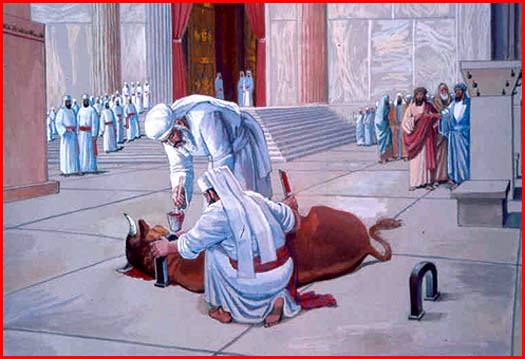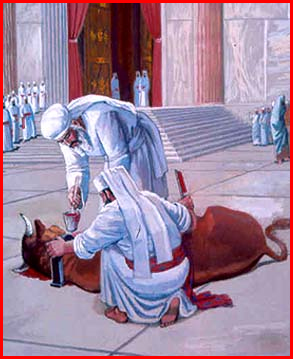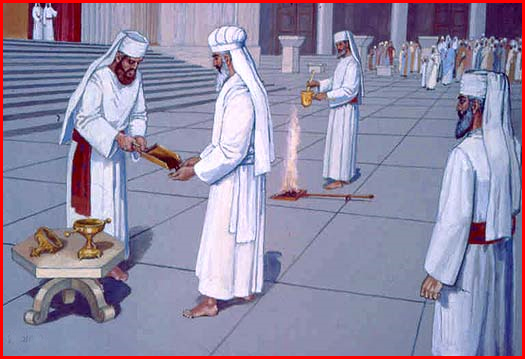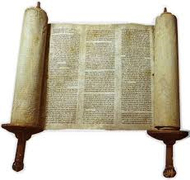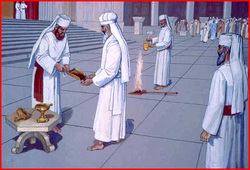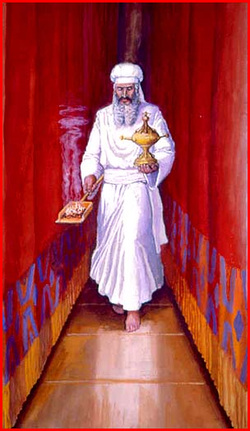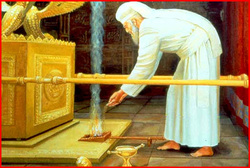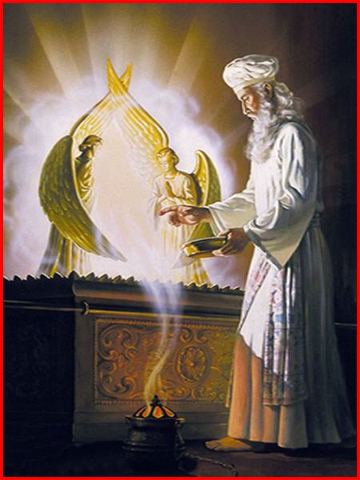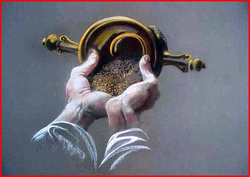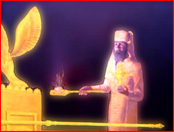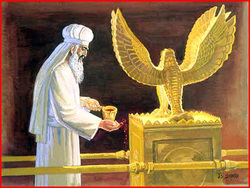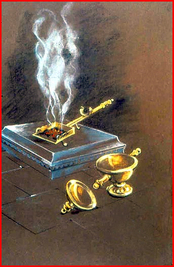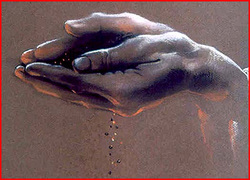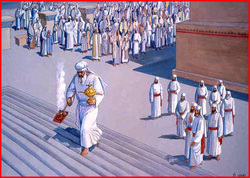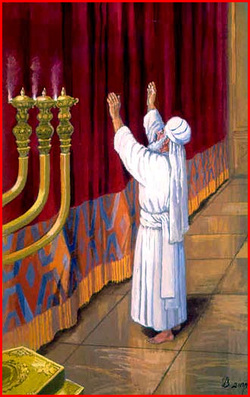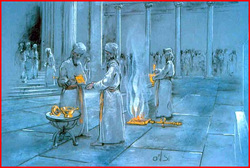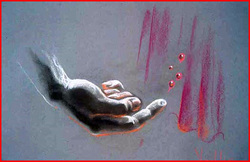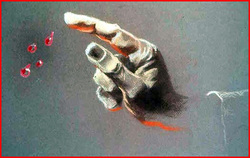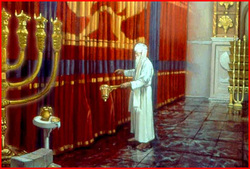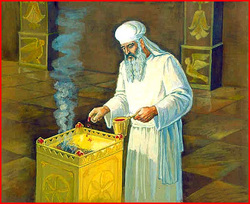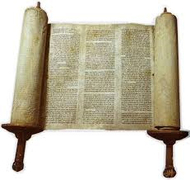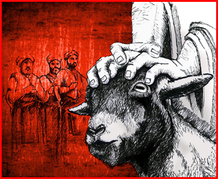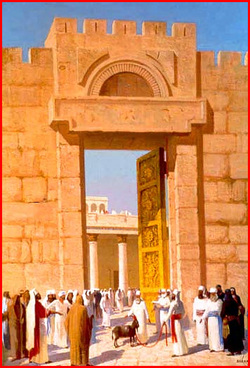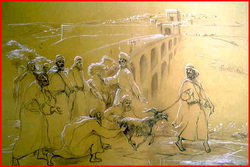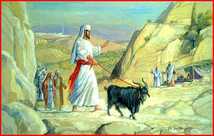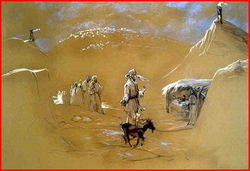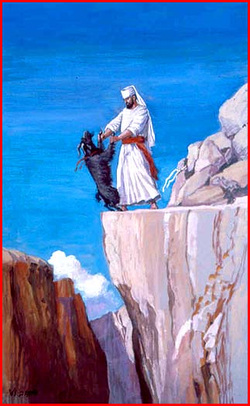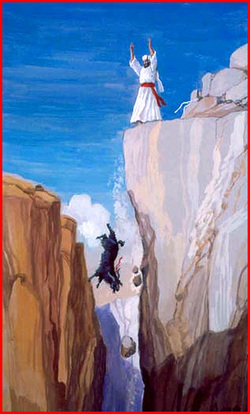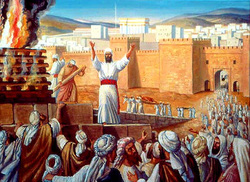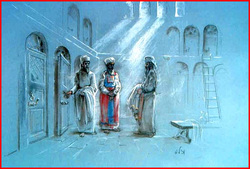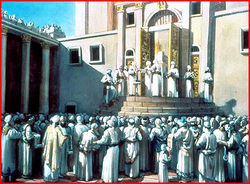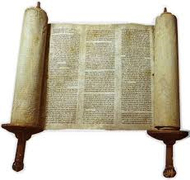| Devotion to Our Lady |
|
- Homepage
-
Daily Thoughts
- 2023 October Daily Thoughts
- Daily Thoughts Lent 2020
- Daily Thoughts for Advent 2019
- Daily Thoughts for October 2019
- Daily Thoughts for September 2019
- Daily Thoughts for August 2019
- Daily Thoughts for July
- Daily Thoughts for June
- Daily Thoughts for Easter 2019
- Daily Thoughts for Lent 2019
- Daily Thoughts for Christmas
- Daily Thoughts Easter 2022
- Sacred Heart
- Holy Ghost
-
Spiritual Life
- Holy Mass Explained
- First Friday Devotions
- First Saturday Devotions
- The Mercy of God
- Vocations
- The Path Everyone Must Walk >
- Gift of Failure
- Halloween or Hell-O-Ween?
- Ignatian Spiritual Exercises >
- Meditation is Soul-Saving
- Spiritual Communion
- Miraculous Medal
- Enrollment in Miraculous Medal
- St. Benedict Medal
- Holy Water
- Advice on Prayer
- Your Daily Mary
-
Prayers
- September Devotions
- Seven Sorrows of Our Lady
-
Novenas
>
- NV-Help of Christians
- NV-Nativity of Our Lady
- NV-Seven Sorrows
- NV- Sorrowful Heart
- NV-Pope St Pius X
- NV-La Salette
- NV-St Michael Archangel
- NV-Immaculate Heart
- NV-Assumption
- NV-Novena for Fathers
- NV-Novena for Your Mother
- NV-St Raphael Archangel
- NV-Souls in Purgatory
- NV-All Saints Day
- NV-Christ the King
- NV-Divine Motherhood
- NV-Guardian Angels
- NV-Rosary
- NV-Mirac Med
- NV- Imm Conc
- NV - Guadalupe
- NV - Nativity of Jesus
- NV-Epiphany
- NV-OL Good Success
- NV-Lourdes
- NV-St Patrick
- NV-St Joseph
- NV-Annunciation
- NV-St Louis de Montfort
- NV-OL Good Counsel
- NV-Last Supper
- NV-Passion
- NV-Pentecost
- NV-Ascension
- NV-Sacred Heart
- NV-Sacred Heart & Perpetual Help
- NV-Corpus Christi
- NV-OL of Perpetual Help
- NV-Queenship BVM
- NV-OL of Mount Carmel
- NV-St Mary Magdalen
- NV- Im Hrt
- August Devotions to IHM
- Immaculate Heart of Mary
- Litany of Dependence
- Prayers to St Mary Magdalen
- Prayers in Times of Sickness Disease & Danger
- Holy Souls in Purgatory
- Meditations on the Litany of Our Lady
- Special Feast Days
- Prayers to Mary (Mon-Sun)
- Litanies to Our Lady >
- Various & Special Needs
- Our Lady of the Rosary
- Our Lady of Mt. Carmel
- Our Lady of Perpetual Help
- Our Lady of Guadalupe
- Other titles of Our Lady
-
Rosary
- Downloads
- Consecration
- Easter Season
-
Holy Week
- Last Seven Words of Jesus >
- Characters of Passion >
- The Last Days of Christ
- Before Palm Sunday
- Palm Sunday
- Monday in Holy Week
- Tuesday in Holy Week
- Wednesday in Holy Week
- Holy Thursday (Last Supper)
- Holy Thursday (Agony & Arrest)
- Night Vigil with Christ
- Good Friday (Pilate & Herod)
- Good Friday (Way of Cross & Crucifixion)
- Saturday in Holy Week
-
Lent
- Ideas for Lent
- Daily Lenten Planner
- Daily Lenten Liturgy
- From Cold to Hot
- Lent with Aquinas
- Lent with Dom Gueranger
- Virtues for Lent
- History of Penance
- How Expensive is Sin?
- Confession of Sins
- Letter to Friends of the Cross
- Sermons for Lent
- Stations of the Cross >
- Lenten Prayers
- 7 Penitential Psalms
- Lenten Psalms SUN
- Lenten Psalms MON
- Lenten Psalms TUE
- Lenten Psalms WED
- Lenten Psalms THU
- Lenten Psalms FRI
- Lenten Psalms SAT
- Lenten Laughs
- Septuagesima
-
Christmas
- Epiphany Explained
- Suggestions for Christmas
- Food For Thought
- Christmas with Aquinas
- Christmas with Dom Gueranger
- Christmas Prayers
- Candles & Candlemas
- Christmas Sermons
- Christmas Prayers SUN
- Christmas Prayers MON
- Christmas Prayers TUE
- Christmas Prayers WED
- Christmas Prayers THU
- Christmas Prayers FRI
- Christmas Prayers SAT
- Twelve Days of Christmas >
-
Advent Journey
- Purgatory
- Christ the King
- Legion of Mary
- Scapular
-
Saints
-
Martyrs for the Faith
>
- Your Daily Martyr >
- All 365 Days of Martyrs
- Cristeros
- St Valentine & Valentine's Day
- Martyrs--Thomas Becket
- Martyrs--John the Apostle
- Holy Machabees
- Age of Martyrdom
- Carmelites of Compiegne
- Martyrs--Peter & Paul
- Martyrs--John the Baptist
- Martyrs--Andrew
- Martyrs--James the Great
- Martyrs--North American
- Martyrs--Seven Holy Sleepers
- Martyrs--Afra
- School of Martyrdom
- Martyrs--Christina
- Desert Saints >
- Saints for Sinners >
- Saints of Mary >
- History of All Saints Day
-
Martyrs for the Faith
>
- Precious Blood
- Synod 2023
-
Catechism
- Catechism Lesson 1
- Catechism Lesson 2
- Catechism Lesson 3
- Catechism Lesson 4
- Catechism Lesson 5
- Catechism Lesson 6
- Catechism Lesson 7
- Catechism Lesson 8
- Catechism Lesson 9
- Catechism Lesson 10
- Catechism Lesson 11
- Catechism Lesson 12
- Catechism Lesson 13
- Catechism Lesson 14
- Catechism Lesson 15
- Catechism Lesson 16
- Catechism Lesson 17
- Catechism Lesson 18
- Catechism Lesson 19
- Catechism Lesson 20
- Catechism Lesson 21
- Catechism Lesson 22
- Bible Study
-
Calendar
- Miracles
- Apparitions
- Shrines
- Prophecies
- Angels Homepage
- Hell
-
Church Crisis
- Conspiracy Theories
- Amazon Synod 2019 >
- Liberalism & Modernism
- Modernism--Encyclical Pascendi
- Modernism & Children
- Modernism--Documents
- The Francis Pages
- Church Enemies on Francis
- Francis Quotes
- Amoris Laetitia Critique
- Danger of Ignorance (Pius X)
- Restore all In Christ (Pius X)
- Catholic Action (Pius X)
- Another TITANIC Disaster?
- The "Errors of Russia"
- CRISIS PRAYERS
- Election Novena 2024
- The Anger Room
- War Zone
- Life of Mary
- Spiritual Gym
- Stupidity
- Coronavirus and Catholicism
- History & Facts
- Books
- Catholic Family
- Children
- Daily Quiz
-
Novena Church & Pope
- Day 01 Church-Pope Novena
- Day 02 Church-Pope Novena
- Day 03 Church-Pope Novena
- Day 04 Church-Pope Novena
- Day 05 Church-Pope Novena
- Day 06 Church-Pope Novena
- Day 07 Church-Pope Novena
- Day 08 Church-Pope Novena
- Day 09 Church-Pope Novena
- Day 10 Church-Pope Novena
- Day 11 Church-Pope Novena
- Day 12 Church-Pope Novena
- Day 13 Church-Pope Novena
- Day 14 Church-Pope Novena
- Day 15 Church-Pope Novena
- Day 16 Church-Pope Novena
- Day 17 Church-Pope Novena
- Day 18 Church-Pope Novena
- Day 19 Church-Pope Novena
- Day 20 Church-Pope Novena
- Day 21 Church-Pope Novena
- Day 22 Church-Pope Novena
- Day 23 Church-Pope Novena
- Day 24 Church-Pope Novena
- Day 25 Church-Pope Novena
- Day 26 Church-Pope Novena
- Day 27 Church-Pope Novena
- Day 28 Church-Pope Novena
- Day 29 Church-Pope Novena
- Day 30 Church-Pope Novena
- Day 31 Church-Pope Novena
- Day 32 Church-Pope Novena
- Day 33 Church-Pope Novena
- Day 34 Church-Pope Novena
- Day 35 Church-Pope Novena
- Day 36 Church-Pope Novena
- Day 37 Church-Pope Novena
- Day 38 Church-Pope Novena
- Day 39 Church-Pope Novena
- Day 40 Church-Pope Novena
- Day 41 Church-Pope Novena
- Day 42 Church-Pope Novena
- Day 43 Church-Pope Novena
- Day 44 Church-Pope Novena
- Day 45 Church-Pope Novena
- Day 46 Church-Pope Novena
- Day 47 Church-Pope Novena
- Day 48 Church-Pope Novena
- Day 49 Church-Pope Novena
- Day 50 Church-Pope Novena
- Day 51 Church-Pope Novena
- Day 52 Church-Pope Novena
- Day 53 Church-Pope Novena
- Day 54 Church-Pope Novena
- Penance Novena
- Daily WeAtheR Forecast
The Greatest and Most Important Time in the Church's Liturgical Year
CLICK ON ANY LINK BELOW
Also lots of LENTEN & HOLY WEEK DOWNLOADS on the downloads page (click here)
LENTEN PAGES
| ASH WEDNESDAY COUNTDOWN | LENT (MAIN PAGE) | DAILY THOUGHTS | DAILY LENTEN LITURGY | DAILY LENTEN PLANNER |
| LENTEN PRAYERS | THE 7 PENITENTIAL PSALMS | IDEAS FOR PENANCE | LENT WITH AQUINAS | LENT WITH DOM GUERANGER |
| HISTORY OF PENANCE | PENANCES OF THE SAINTS | HOW EXPENSIVE IS SIN? | CONFESSION OF SINS | ARE FEW SOULS SAVED? |
| VIRTUES FOR LENT | FROM COLD TO HOT | LENTEN LAUGHS | | SERMONS FOR LENT | LETTER TO FRIENDS OF THE CROSS |
| STATIONS OF THE CROSS (INDIVIDUALLY) | ALL 14 STATIONS OF THE CROSS | LITANIES FOR PASSIONTIDE |
| THE LAST DAYS OF CHRIST | SPECIAL HOLY WEEK PAGES |
LITURGICAL PRAYERS FOR EACH DAY OF THE WEEK DURING LENT
| Sundays of Lent | Mondays of Lent | Tuesdays of Lent | Wednesdays of Lent | Thursdays of Lent | Fridays of Lent | Saturdays of Lent |
HOLY WEEK PAGES
| Holy Week Main Page | Before Palm Sunday | Palm Sunday | The Last Days of Christ | Holy Thursday Last Supper Novena | Good Friday Passion Novena |
| Monday of Holy Week | Tuesday of Holy Week | Wednesday of Holy Week | Holy Thursday (Last Supper) | Holy Thursday (Agony & Arrest) |
| Night Vigil With Christ | Good Friday (Pilate & Herod) | Good Friday (Way of Cross & Crucifixion) | Holy Saturday |
THE CHIEF CHARACTERS OF THE PASSION
| Characters of the Passion Mainpage | The Sanhedrin | Pharisees | Scribes | Saducees | Jewish Crowd | Roman Rulers |
| Judas | Annas & Caiphas | Pontius Pilate | Herod | Barabbas | Dismas the Good Thief | St. Peter | St. John | Mary Magdalen |
THE FOURTEEN STATIONS OF THE CROSS
| Introduction to the Stations of the Cross | Short Version of the Stations of the Cross (all 14 on one page) | 1st Station | 2nd Station | 3rd Station |
| 4th Station | 5th Station | 6th Station | 7th Station | 8th Station | 9th Station | 10th Station | 11th Station | 12th Station | 13th Station | 14th Station |
THE LAST SEVEN WORDS OF JESUS FROM THE CROSS
| Seven Last Words on the Cross (Introduction) | The 1st Word on the Cross | The 2nd Word on the Cross | The 3rd Word on the Cross |
| The 4th Word on the Cross | The 5th Word on the Cross | The 6th Word on the Cross | The 7th Word on the Cross |
PRAYERS AND DEVOTIONS TO THE SEVEN SORROWS OF OUR LADY
| Seven Sorrows Meditations | Short Prayers & Short Seven Sorrows Rosary | Longer Seven Sorrows Rosary |
| 1st Sorrow of Our Lady | 2nd Sorrow of Our Lady | 3rd Sorrow of Our Lady | 4th Sorrow of Our Lady |
| 5th Sorrow of Our Lady | 6th Sorrow of Our Lady | 7th Sorrow of Our Lady |
| Novena #1 to the Sorrowful Heart of Mary | Novena #2 to the Sorrowful Heart of Mary |
CLICK ON ANY LINK BELOW
Also lots of LENTEN & HOLY WEEK DOWNLOADS on the downloads page (click here)
LENTEN PAGES
| ASH WEDNESDAY COUNTDOWN | LENT (MAIN PAGE) | DAILY THOUGHTS | DAILY LENTEN LITURGY | DAILY LENTEN PLANNER |
| LENTEN PRAYERS | THE 7 PENITENTIAL PSALMS | IDEAS FOR PENANCE | LENT WITH AQUINAS | LENT WITH DOM GUERANGER |
| HISTORY OF PENANCE | PENANCES OF THE SAINTS | HOW EXPENSIVE IS SIN? | CONFESSION OF SINS | ARE FEW SOULS SAVED? |
| VIRTUES FOR LENT | FROM COLD TO HOT | LENTEN LAUGHS | | SERMONS FOR LENT | LETTER TO FRIENDS OF THE CROSS |
| STATIONS OF THE CROSS (INDIVIDUALLY) | ALL 14 STATIONS OF THE CROSS | LITANIES FOR PASSIONTIDE |
| THE LAST DAYS OF CHRIST | SPECIAL HOLY WEEK PAGES |
LITURGICAL PRAYERS FOR EACH DAY OF THE WEEK DURING LENT
| Sundays of Lent | Mondays of Lent | Tuesdays of Lent | Wednesdays of Lent | Thursdays of Lent | Fridays of Lent | Saturdays of Lent |
HOLY WEEK PAGES
| Holy Week Main Page | Before Palm Sunday | Palm Sunday | The Last Days of Christ | Holy Thursday Last Supper Novena | Good Friday Passion Novena |
| Monday of Holy Week | Tuesday of Holy Week | Wednesday of Holy Week | Holy Thursday (Last Supper) | Holy Thursday (Agony & Arrest) |
| Night Vigil With Christ | Good Friday (Pilate & Herod) | Good Friday (Way of Cross & Crucifixion) | Holy Saturday |
THE CHIEF CHARACTERS OF THE PASSION
| Characters of the Passion Mainpage | The Sanhedrin | Pharisees | Scribes | Saducees | Jewish Crowd | Roman Rulers |
| Judas | Annas & Caiphas | Pontius Pilate | Herod | Barabbas | Dismas the Good Thief | St. Peter | St. John | Mary Magdalen |
THE FOURTEEN STATIONS OF THE CROSS
| Introduction to the Stations of the Cross | Short Version of the Stations of the Cross (all 14 on one page) | 1st Station | 2nd Station | 3rd Station |
| 4th Station | 5th Station | 6th Station | 7th Station | 8th Station | 9th Station | 10th Station | 11th Station | 12th Station | 13th Station | 14th Station |
THE LAST SEVEN WORDS OF JESUS FROM THE CROSS
| Seven Last Words on the Cross (Introduction) | The 1st Word on the Cross | The 2nd Word on the Cross | The 3rd Word on the Cross |
| The 4th Word on the Cross | The 5th Word on the Cross | The 6th Word on the Cross | The 7th Word on the Cross |
PRAYERS AND DEVOTIONS TO THE SEVEN SORROWS OF OUR LADY
| Seven Sorrows Meditations | Short Prayers & Short Seven Sorrows Rosary | Longer Seven Sorrows Rosary |
| 1st Sorrow of Our Lady | 2nd Sorrow of Our Lady | 3rd Sorrow of Our Lady | 4th Sorrow of Our Lady |
| 5th Sorrow of Our Lady | 6th Sorrow of Our Lady | 7th Sorrow of Our Lady |
| Novena #1 to the Sorrowful Heart of Mary | Novena #2 to the Sorrowful Heart of Mary |
Article 1
PENANCE IS AS OLD AS TIME ITSELF
PENANCE IS AS OLD AS TIME ITSELF
Article 2
SIN REQUIRES SATISFACTION
SIN REQUIRES SATISFACTION
Article 3
THE SCAPEGOAT
THE SCAPEGOAT
|
|
The ritual and ceremonies surrounding the Scapegoat (emissary goat), that were commanded by God Himself, are a fascinating topic of study. The Scapegoat turned out to be a prefiguration of Our Lord Jesus Christ, who would be both the High Priest offering the sacrifice, as well as the Victim of that sacrifice (the goat).
The subject is so interesting, that we have decided to spread the coverage over several parts, so as to fall into the temptation of superficially flying past this insightful topic with a mere handful of cheap clichés being offered as an explanation. This first part will serve as an general overview of the Scapegoat. Further articles will go through the entire ceremony explaining things as we go along, and linking them to the Jesus Christ and His Passion and Death. The commands concerning the Scapegoat and the Day of Atonement were given by God to Moses, while the Israelites were still in the desert. God was not pleased with their attitude and behavior and so commanded a once-a-year Day of Atonement for sin to be held, wherein many sacrifices would be offered—the Scapegoat being part of those many sacrifices—to repair in some way for the sins of the nation and its people. You can read the text of the instructions given by God in the sidebar on the right side of this page, which are taken from chapter 16 of the Book of Leviticus, one of the five books of Penateuch (meaning the first five books of the Bible), or as the Israelites call it, the "Torah." Introductory Overview of the Day of Atonement Only the High-Priest could enter the inner room of the Tabernacle, called the Holy of Holies, where was the Ark of the Covenant, and where God was supposed to live. And even the High-Priest could go into this room on but one day in the year. This day was called "the Great Day of Atonement." The modern day Jews call it Yom Kippur (Yom Ha-Kipurim), the name being of later rabbinic origin. The ritual for "the Great Day of Atonement" is a prefiguration of the "the Great Day of Atonement of Our Lord Jesus Christ" who became a scapegoat for our sins. “The [old] law having a shadow of the good things to come” (Hebrews 10:1). “Jesus is faithful to Him that made Him, as was also Moses in all his house. For this man [Jesus] was counted worthy of greater glory than Moses” (Hebrews 3:2-2) ... “For every High Priest taken from among men, is ordained for men in the things that appertain to God, that he may offer up gifts and sacrifices for sins” (Hebrews 5:1). As we examine the Old Testament ritual, the parallels with Our Lord’s Passion and Death will be seen to be most striking. The ritual and ceremonies of that day were to show the people that all are sinners, and that they must seek mercy from God and atone for their sins. Even though the law and mind of God was written down, few could read and even fewer had access to the written word. There were no books as we know them today. By having the Israelites publicly perform a ritual of atonement, God knew that these actions would have a greater impression upon His wayward Chosen People than just mere words—so then God taught the people by acts which they could see and experience. As a beginning to the service on the Day of Atonement, everybody was required to fast, from sunset on the day before until three o'clock on the afternoon of the Day of Atonement, which was the hour when the offering was placed on the altar. No person could eat anything in all that time. Even children, except nursing babies, were not allowed to have any food. They were to show a sorrow for sin, and were to appear before God as seeking for mercy. Early in the morning of the Day of Atonement, the High-Priest offered on the altar before the Tabernacle what was called "a sin-offering," for himself and his family. It was a young ox, burned upon the altar. He took some of the blood of this ox, and carried it through the Holy Place, lifted the veil, entered into the Holy of Holies, and sprinkled the blood, before the Lord, on the golden lid of the Ark of the Covenant. This was to show the High-Priest himself to be a sinner, seeking mercy and forgiveness from God. The High-Priest must himself have his own sins forgiven, before asking forgiveness for others. Then the High-Priest came again to the great altar before the Tabernacle. Here two goats were brought to him. Lots were cast upon them and on the forehead of one goat was written, "For the Lord," and on the other words that meant, "To be sent away." These two goats were looked upon as bearing or carrying the sins of the people. One was killed, and burned on the altar; and the High-Priest, with some of the blood of the slain goat, again entered the Holy of Holies, and sprinkled the blood on the Ark of the Covenant, as before, thus asking God to receive the blood and the offering, and to forgive the sins of the people. Then the High-Priest came out of the Tabernacle again, and laid his hands on the head of the living goat, the one whose forehead was marked "To be sent away," as if to place upon him the sin of all the people. Then this goat, which was called the "Scapegoat," was led away into the wilderness, to some desolate place from which he would never find his way back to the camp; and there he was left, to wander as he chose. When the Israelites had settled in Jerusalem, the "Scapegoat" was led away from the city to be thrown over a cliff edge to its death. This was to show the sins of the people as taken away, never to come back to them. When this service was over, the people were looked upon as having their sins forgiven and forgotten by the Lord. Then the regular afternoon offering was given on the altar; and after that the people could go home happy, and end their long fast with all the food that they wished to eat. In all this God tried to make the people feel that sin is terrible. It separates from God; it brings death; it must be taken away by blood. Thus so long before Christ came to take away our sins by His death, God showed to men the way of forgiveness and peace. A MORE DETAILED LOOK AT
THE SCAPEGOAT AND THE DAY OF ATONEMENT Preparations for the Day of Atonement
The Day of Atonement, instituted by Moses according to Biblical tradition occurs on the tenth day of the seventh month, and is distinguished by abstaining from all food on that day and by an elaborate ceremonial. The High Priest Bears Full Responsibility for the Service As opposed to other ceremonies throughout the year, all of the sacred tasks performed on the Day of Atonement—tasks which would bring about atonement for Israel—had to be done exclusively by the High-Priest himself. As the Bible states a number of times in the book of Leviticus, chapter 16: “He shall offer … He shall be vested… He shall receive from the whole multitude… He shall make the two buck goats to stand before the Lord…" The High Priest had to make atonement for himself and for his household. Then he could atone for the people. He alone is responsible for every aspect of the Divine service on what was looked upon as being a most holy and awesome day: a total of fifteen separate sacrifices were offered, as well as the menorah, incense, and other services. Intense Study, Practice, and Rehearsal Throughout that week, the High-Priest diligently studies the laws relating to the tasks which he must undertake on the upcoming sacred day, and he also conducts certain aspects of the daily service himself (even though it is not his exclusive duty) in order to familiarize himself with these actions. For example, during these days he himself tosses the blood of the daily sacrifice onto the altar in the morning and evenings; he offers up the incense on the golden incense altar; he attends to the service of the menorah (cleaning the used oil and wicks, adjusting new wicks and adding the proper measure of oil to each flame). This is a period of intense preparation and review. Each day, the elders of the Sanhedrin (the supreme rabbinical court) read aloud before him from the biblical portion that relates to the service (Leviticus, chapter 16: see sidebar on right-hand-side). Separation Seven Days in Advance There is much to be done in order to prepare the High Priest for this momentous and fateful day. Just as the first High-Priest, Aaron, separated himself away from others during the seven days of inauguration ("And you shall not go out of the door of the tabernacle for seven days, until the day wherein the time of your consecration shall be expired. For in seven days the consecration is finished" — Leviticus 8:33), so too the High-Priest leaves his own home and family a full week before the advent of the Day of Atonement, and withdraws to his chamber in the Holy Temple. Meanwhile, at the same time another Priest is designated as the High-Priest's replacement, in the event that he inadvertantly becomes defiled and cannot purify himself in time to conduct the service. An extra High-Priest's uniform (the "golden garments") was prepared according for this substitute as well, according to his size and measurements. "Read Aloud Yourself" The elders would declare: "Master! High-Priest! Please read aloud likewise yourself; perhaps there is something you have forgotten, or some detail you have not learned." This is because one who reads aloud himself is less prone to forget than someone who has merely heard the words from another's lips, and the purpose of this entire process was for the High-Priest to be absolutely familiar with these details. Additionally, the exhortation to "read aloud yourself" was necessary during part of the Second Temple era. For whereas the High-Priests of the First Temple were chosen for their wisdom and good standing, this was not always the case during the days of the Second Temple. Many High-Priests of that period were corrupt individuals who bought their positions through wealth and influence with the foreign government; some of these men were far from being proper scholars. Thus the elders had grounds to suspect that they were less than adequately familiar with the holy texts and principles of worship. Eve of the Day of Atonement: The Climax Draws Near The Day of Atonement is approaching, and tension mounts as all of Israel anticipates the arrival of the great day when atonement is granted for sin and the true nature of man's relationship with his Creator is revealed. All eyes are turned to the High Priest, who, on that holiest day of the year, will enter into the holiest place on earth - the Holy of Holies — to make atonement for Israel and seek to rectify the imbalances in her spiritual connection to her Father in Heaven. On the morning of the day preceding the Day of Atonement, the High-Priest stands in the Eastern Gate. There, cows, rams and sheep are marched before him, and he watches them intently while reviewing in his mind all of the precepts he has learned regarding the order of their sacrifice, and other facets of the service he will be conducting tomorrow. Eve of the Day of Atonement: The Elders of the Priesthood Until today, the High-Priest had been under the supervision of the court elders, who daily read aloud in his presence. Now, on the eve of the holy day, these sages present him to the elders of the priesthood, in order for him to receive instruction in the incense service — a most difficult task. He will need to learn from the benefit of their experience, in order to execute this important duty properly. He is escorted by the elders of the Sanhedrin to the Chamber of Avtinas, where the incense is prepared by the priestly Avtinas family (according to their secret tradition). It is here that he will receive his instruction in the incense service from the senior priests. Eve of the Day of Atonement: An Oath Before Parting Before the members of the Sanhedrin relinquish the High-Priest from their custody, a questioning takes place between them and their charge: they require that he swear he is not a member of the sect of Sadducees, and does not subscribe to Sadducean belief. (In the next article, we will look at how the Day of Atonement, with the Scapegoat an integral part of it, unfolded). |
THE BIBLE TEXT ON THE SCAPEGOAT
Leviticus 16:1-34 The Day of Atonement
in chapter 16 of the Book of Leviticus [1] And the Lord spoke to Moses, after the death of the two sons of Aaron, when they were slain upon their offering strange fire:
[2] And he commanded him, saying, Speak to Aaron thy brother, that he enter not* at all into the sanctuary, which is within the veil before the propitiatory, with which the ark is covered, lest he die, for I will appear in a cloud over the oracle, [3] Unless he first do these things: He shall offer a calf for sin, and a ram for a holocaust. [4] He shall be vested with a linen tunic, he shall cover his nakedness with linen breeches: he shall be girded with a linen girdle, and he shall put a linen mitre upon his head: for these are holy vestments: all which he shall put on, after he is washed. [5] And he shall receive from the whole multitude of the children of Israel two buck goats for sin, and one ram for a holocaust. [6] And when he hath offered the calf and prayed for himself, and for his own house, [7] He shall make the two buck goats to stand before the Lord in the door of the tabernacle of the testimony: [8] And casting lots upon them both, one to be offered to the Lord, and the other to be the emissary goat: [9] That whose lot fell to be offered to the Lord, he shall offer for sin: [10] But that whose lot was to be the emissary goat, he shall present alive before the Lord, that he may pour out prayers upon him, and let him go into the wilderness. [11] After these things are duly celebrated, he shall offer the calf, and praying for himself and for his own house, he shall immolate it: [12] And taking the censer, which he hath filled with the burning coals of the altar, and taking up with his hand the compounded perfume for incense, he shall go in within the veil into the holy place: [13] That when the perfumes are put upon the fire, the cloud and vapour thereof may cover the oracle, which is over the testimony, and he may not die. [14] He shall take also of the blood of the calf, and sprinkle with his finger seven times towards the propitiatory to the east. [15] And when he hath killed the buck goat for the sin of the people, he shall carry in the blood thereof within the veil, as he was commanded to do with the blood of the calf, that he may sprinkle it over against the oracle, [16] And may expiate the sanctuary from the uncleanness of the children of Israel, and from their transgressions, and all their sins. According to this rite shall he do to the tabernacle of the testimony, which is fixed among them in the midst of the filth of their habitation. [17] Let no man be in the tabernacle when the high priest goeth into the sanctuary, to pray for himself and his house, and for the whole congregation of Israel, until he come out. [18] And when he is come out to the altar that is before the Lord, let him pray for himself, and taking the blood of the calf, and of the buck goat, let him pour it upon the horns thereof round about: [19] And sprinkling with his finger seven times, let him expiate, and sanctify it from the uncleanness of the children of Israel. [20] After he hath cleansed the sanctuary, and the tabernacle, and the altar, then let him offer the living goat: [21] And putting both hands upon his head, let him confess all the iniquities of the children of Israel, and all their offences and sins: and praying that they may light on his head, he shall turn him out by a man ready for it, into the desert. [22] And when the goat hath carried all their iniquities into an uninhabited land, and shall be let go into the desert, [23] Aaron shall return into the tabernacle of the testimony, and putting off the vestments, which he had on him before when he entered into the sanctuary, and leaving them there, [24] He shall wash his flesh in the holy place, and shall put on his own garments. And after that he has come out and hath offered his own holocaust, and that of the people, he shall pray both for himself, and for the people: [25] And the fat that is offered for sins, he shall burn upon the altar. [26] But he that hath let go the emissary goat, shall wash his clothes, and his body with water, and so shall enter into the camp. [27] But the calf and the buck goat, that were sacrificed for sin, and whose blood was carried into the sanctuary, to accomplish the atonement, they shall carry forth without the camp, and shall burn with fire, their skins and their flesh, and their dung: [28] And whosoever burneth them shall wash his clothes, and flesh with water, and so shall enter into the camp. [29] And this shall be to you an everlasting ordinance: The seventh month, the tenth day of the month, you shall afflict your souls, and shall do no work, whether it be one of your own country, or a stranger that sojourneth among you. [30] Upon this day shall be the expiation for you, and the cleansing from all your sins: you shall be cleansed before the Lord. [31] For it is a sabbath of rest, and you shall afflict your souls by a perpetual religion. [32] And the priest that is anointed, and whose hands are consecrated to do the office of the priesthood in his father’ s stead, shall make atonement; and he shall be vested with the linen robe and the holy vestments, [33] And he shall expiate the sanctuary and the tabernacle of the testimony and the altar, the priest also and all the people. [34] And this shall be an ordinance for ever, that you pray for the children of Israel, and for all their sins once in a year. He did therefore as the Lord had commanded Moses. * verse 2: “Enter not”— No one but the High Priest, and he but once a year, could enter into the sanctuary; to signify that no one could enter into the sanctuary of Heaven, till Christ our High Priest opened it by His Passion (Hebrews 10:8). |
Article 4
THE DAY OF ATONEMENT ARRIVES
THE DAY OF ATONEMENT ARRIVES
|
|
THE MORNING OF THE DAY OF ATONEMENT
The Immersion of the High Priest On the morning of the Day of Atonement (modern name: Yom Kippur), the High Priest ascends the stairway above the Water Gate, in order to perform his first of five required immersions into the ritual bath for the Day of Atonement. The remaining four immersions that take place during the day are done in a ritual bath atop the Parvha Chamber. A white lined sheet is held up separating the High Priest from the onlookers. This is done as a reminder to all onlookers that the High Priest will administer the Atonement ceremony wearing white garments only. The High Priest Sanctifies His Hands and Feet Before entering the ritual bath, the High Priest first sanctifies his hands and feet, pouring water on them from a golden vessel. Upon emerging from the ritual bath, he would again sanctify his hands and feet in the same manner. On all other days of the year, the High Priest would sanctify his hands and feet using a copper vessel. Only on the Day of Atonement would he use a gold vessel for this purpose. The Daily Incense Offering Then the High Priest would make three separate offerings of incense. The first two offerings were done upon the golden incense altar located in the Kodesh, (the Sanctuary). Facing north, the High Priest pours the incense onto the altar, as the column of smoke rises. The Courtyard Fills with People At dawn the gates are opened, and the people begin to pour in for this national Day of Atonement for sin. The Sacrificial Offering "The tenth day also of this seventh month [the Day of Atonement] shall be holy and venerable unto you, and you shall afflict your souls: you shall do no servile work therein. And you shall offer a holocaust to the Lord for a most sweet odor, one calf of the herd, one ram, and seven lambs of a year old, without blemish...And a buck goat for sin, besides the things that are wont to be offered for sin, for expiation, and for the perpetual holocaust with their sacrifice" (Numbers 29:7-11). The Day of Atonement Ceremony "And the Lord spoke to Moses, after the death of the two sons of Aaron, when they were slain upon their offering strange fire. And God commanded Moses, saying, 'Speak to Aaron thy brother, that he enter not at all into the sanctuary, which is within the veil before the propitiatory, with which the ark is covered, lest he die, for I will appear in a cloud over the oracle, unless he first do these things: "He shall offer a calf for sin, and a ram for a holocaust; he shall be vested with a linen tunic, he shall cover his nakedness with linen breeches: he shall be girded with a linen girdle, and he shall put a linen mitre upon his head: for these are holy vestments: all which he shall put on, after he is washed. and he shall receive from the whole multitude of the children of Israel two buck goats for sin, and one ram for a holocaust. And when he hath offered the calf and prayed for himself, and for his own house" (Leviticus 16:1-3). The High Priest's Sin Offering The bullock or calf sacrifice, that the High Priest brings as his own personal atonement (and for his family as well), must be of his own personal possession. Thus after he dresses in his white vestments ("he shall be vested... "), the High Priest begins the ceremonies of the day with his own personal offering. The bullock has already been placed in position, and it is now standing in the northern section of the court, between the sanctuary and the altar. The calf's or bullock's pre-positioning in the vicinity of the sanctuary was done in consideration of the High Priest, who will be officiating alone throughout the entire day's ceremony. There was concern that, fasting and exerting himself with strenuous ceremony and prayer, he may become weakened; he will soon need to bring a heavy sacrificial vessel filled with the blood of the bullock into the Holy of Holies, where drops of blood will be sprinkled therein, on the inner side of the curtain. Thus the bullock was placed nearer to the sanctuary in order to shorten the High Priest's path, even if only slightly. To whatever extent possible, care was taken to aid him in the execution of his sacred tasks. The High Priest's Oral Confession The High Priest drew near to the animal. Facing the sanctuary, he placed his two hands on the bullock's head, between its horns, and confessed. This was in keeping the directives of the verse: "And Aaron shall offer the bullock of the sin offering which is for himself, and he shall make atonement for himself and for his family…” It was a tradition that held that these words refer to oral confession. And this was the wording of the High Priest's confession: "I beseech Thee, O Lord; I have sinned, rebelled, and transgressed against Thee, I, and my household; I beseech Thee, O Lord, grant atonement for the sins, and for the iniquities and transgressions which I have committed against Thee, I and my household. As it is written in the Books of Thy servant, Moses: 'For on this day atonement shall be made for you, to purify you from all your sins — before the Lord you shall be purified.'" The Ineffable Name of God During these prayers on this awesome day, the High Priest would utter the Ineffable Name of God known as the Tetragrammaton. In Hebrew, this is known as God's "proper name" and denotes the Holy One as the ultimate source of all existence. This most Holy Name is ordinarily not pronounced and is not used at all outside of the Holy Temple. Even in the Temple it is used infrequently. During the course of the ceremonies on the Day of Atonement, the High Priest will have occasion to utter it 10 times. The People's Response In this confession, the High Priest pronounces this Holy Name three times. When the congregation who are assembled in the court hear the Holy Name of God from the lips of the High Priest, they collectively respond "Blessed be the Name of His glorious kingdom, for ever and ever," and prostrate themselves on the ground. This response is based on the verse in Moses' canticle, (Deuteronomy 32:3), "Because I will invoke the Name of the Lord: give ye magnificence to our God." This is explained as meaning that Moses told Israel, "Whenever I mention the Holy One's name, you should ascribe greatness to our God." The Scapegoat Though all of the moving ceremony on the Day of Atonement was filled with awe and mystery, tense anticipation and deep personal stirrings of repentance, surely one of the most dramatic moments of the day is the lottery which the High Priest conducts, for this is the process that will determine the Scapegoat, which will be expelled and cast off as an atonement for Israel's sins. After having confessed his sins over the sacrifice of his bullock, the High Priest walks to the eastern section of the court, facing the entrance. He is accompanied by two men: at his right, the "assistant," who is actually none other than the replacement priest who was designated as a stand-in for the High Priest, should he be rendered unfit. At his left, the head of the family clan who is responsible for the service in the Temple on that day of the week. The Fateful Lottery Great anticipation and feelings of repentance mark the entire Day of Atonement ceremony. One of the most dramatic moments is the lottery selecting the scapegoat, which acts as an atonement for Israel's sins. This High Priest is seen above, flanked by the Deputy High Priest on his right, and the head of the family on duty, on his left. The Two Goats and the Lottery Box There in the eastern sector of the court, to the north of the altar, stand two goats in preparation for the lottery: "He shall make the two buck goats to stand before the Lord in the door of the tabernacle of the testimony: and casting lots upon them both, one to be offered to the Lord, and the other to be the emissary goat (the Scapegoat for Azazel). That whose lot fell to be offered to the Lord, he shall offer for sin: but that whose lot was to be the emissary goat, he shall present alive before the Lord, that he may pour out prayers upon him, and let him go into the wilderness" (Leviticus 16:7-10). A wooden lottery box was kept there as well, and within it were the two lots, in accordance with the verses above. This box was just large enough to hold the two lots, and for the priest to put both his hands inside. On one lot the two Hebrew words meaning "For the Lord" were written, and the other was inscribed with single word "For Azazel." Azazel is actually the name of a place; it was to this location that the scapegoat was sent. Azazel was a high, rocky precipice in the Judean desert. The goat was cast over the cliff edge at this point, to its death. Some authors have suggested that it was the name of a devil, as the devil was thought to roam about the desert regions. These two ideas actually fit well together. These lots were originally made of wood. This was probably what we know today as boxwood; some have written that a wood resembling mahogany was used. Later, the lots were prepared from gold, which was done to increase the honor of the holy day. Drawing the Lots Flanked by the two men on either side of him, as well as one goat on his right hand side and the other goat on his left hand side, the High Priest thrusts his hands into the lottery box and stirs the two lots within, in order to ascertain that he has no notion of which is inscribed "For the Lord." It was considered an auspicious sign from Heaven if that lot were to be drawn by his right hand; thus he mixes the lots about so that he will not recognize them, and thereby raise that lot in his right hand. Tradition does in fact record that for a period of many years, it actually transpired that the High Priest's right hand did arbitrarily come up holding the lot marked "For the Lord." This phenomenon ceased a number of years before the Temple's destruction. Other opinions maintain that he drew the lots very quickly from their box, demonstrating that he acts without forethought or hesitation as to which lot he is raising. In this manner, the High Priest raised up the two lots from the box, one in his right hand and one in his left. Only once he held them up did he learn which hand held each lot. "Raise Up Your Right Hand!" If his right hand held the lot of "For the Lord," the assistant would declare "Master! High Priest! Raise up your right hand!" And hearing this cry, all those assembled would receive the news, and know that this favorable sign has indeed transpired. But if his left hand was seen to contain this lot, the head of the family clan cried out "Master! High Priest! Raise up your left hand!" And thus the deed would be known. Placing the Lots The High Priest then places these lots upon the heads of the goats, between their horns: that which he raised up in his right hand is placed upon the animal to his right, and of the left, to his left. When placing the lot of "For the Lord" upon the sacrifice, he recites aloud the words "For the Lord, a sin offering," once again pronouncing the holy Ineffable Name of God. All the priests and Israelites present who hear this name repeat the verse "Blessed is the name... ," as above. A "Tongue of Crimson Wool" After placing the lots upon the goats, the High Priest ties a length of crimson-dyed wool between the horns of the scapegoat, and stands the goat facing the Temple's eastern gate, through which it will be led off. He also ties a similar length of wool around the neck of the goat which will be sacrificed. This elongated skein of wool is called a "tongue" on account of its shape. They were tied around the goats in order to prevent them from being mixed up with other animals, and each was tied in a distinctive manner so that they should not be confused with each other. The Miracle of the Crimson Wool These lengths of wool were specifically dyed crimson on account of the verse which reads, "If your sins be as scarlet, they shall be made as white as snow: and if they be red as crimson, they shall be white as wool" (Isaias 1:18). It is related that a great miracle occurred concerning this crimson-colored wool: For in addition to the piece which was tied to the scapegoat, a similar length was tied to the entrance of the Sanctuary where all could behold it, high up like a banner. They say that when the scapegoat reached its destination in the desert, this wool miraculously turned white before the eyes of all Israel, in keeping with the words of the prophet - and thus providing a Heavenly sign that the sins of the people had been atoned for. The two goats thus prepared, the High Priest will now leave them be and proceed with other aspects of this singular day's ceremonies. He will return to the sacrifice of the goat "For the Lord" and the Scapegoat "For Azazel" only later, after the ceremonies of the bullock and the incense are completed. All the various components and aspects of the Day of Atonement ceremony must be done according to a specific order. The Second Oral Confession Now the High Priest once again draws near to his own offering, the bullock. At this time he will again confess over the animal; the first time he did this, his confession was on behalf of himself and his family. This time he confesses on behalf of all his fellow priests. Once again he places his hands on the animal's head, between its horns, and pronouncing the Ineffable Name he recites his plea: "I beseech Thee, O Lord; I have sinned, rebelled, and transgressed against Thee, I and my household, And the sons of Aaron, Thy holy people; I beseech Thee, O Lord, Grant atonement for the sins, and for the iniquities and transgressions which I have committed against Thee, I and my household, and the sons of Aaron, Thy holy people, as it is written in the Books of Thy servant, Moses: 'For on this day atonement shall be made for you, to purify you from all your sins—before the Lord you shall be purified.'" As above, the congregation responds with the words "Blessed be the Name of His glorious kingdom, for ever and ever." First the High Priest atones for his own sins and those of his family, and only afterwards does he make atonement for his colleagues... for it is better for an innocent man to make rectification for those who are liable. The Bullock is Slaughtered At the conclusion of his second confession, the High Priest slaughters the bullock. He receives the offering's blood in the mizrak vessel, and then gives this vessel to another priest. The former immediately goes to prepare for the incense ceremony, and the latter must stand outside the entrance to the Sanctuary and hold this vessel, continuously moving it with a stirring motion. This in done in order to prevent its contents from beginning to harden - since this would invalidate it to be dashed upon the altar. The second priest, thus occupied with the mizrak, waits in this spot for the return of the High Priest, who will bring the mizrak into the Sanctuary. In the meantime, the High Priest ascends to the top of the altar in the court, carrying a golden shovel equipped with a specially long handle — designed to aid him in performing the particularly difficult movements he will require to conduct the incense ceremony alone on this holy day. In the next chapter, we will look at how the Day of Atonement ceremony
dealt with the Scapegoat. |
THE BIBLE TEXT ON THE SCAPEGOAT
Leviticus 16:1-34 The Day of Atonement in chapter 16 of the Book of Leviticus
[1] And the Lord spoke to Moses, after the death of the two sons of Aaron, when they were slain upon their offering strange fire:
[2] And he commanded him, saying, Speak to Aaron thy brother, that he enter not* at all into the sanctuary, which is within the veil before the propitiatory, with which the ark is covered, lest he die, for I will appear in a cloud over the oracle, [3] Unless he first do these things: He shall offer a calf for sin, and a ram for a holocaust. [4] He shall be vested with a linen tunic, he shall cover his nakedness with linen breeches: he shall be girded with a linen girdle, and he shall put a linen mitre upon his head: for these are holy vestments: all which he shall put on, after he is washed. [5] And he shall receive from the whole multitude of the children of Israel two buck goats for sin, and one ram for a holocaust. [6] And when he hath offered the calf and prayed for himself, and for his own house, [7] He shall make the two buck goats to stand before the Lord in the door of the tabernacle of the testimony: [8] And casting lots upon them both, one to be offered to the Lord, and the other to be the emissary goat: [9] That whose lot fell to be offered to the Lord, he shall offer for sin: [10] But that whose lot was to be the emissary goat, he shall present alive before the Lord, that he may pour out prayers upon him, and let him go into the wilderness. [11] After these things are duly celebrated, he shall offer the calf, and praying for himself and for his own house, he shall immolate it: [12] And taking the censer, which he hath filled with the burning coals of the altar, and taking up with his hand the compounded perfume for incense, he shall go in within the veil into the holy place: [13] That when the perfumes are put upon the fire, the cloud and vapour thereof may cover the oracle, which is over the testimony, and he may not die. [14] He shall take also of the blood of the calf, and sprinkle with his finger seven times towards the propitiatory to the east. [15] And when he hath killed the buck goat for the sin of the people, he shall carry in the blood thereof within the veil, as he was commanded to do with the blood of the calf, that he may sprinkle it over against the oracle, [16] And may expiate the sanctuary from the uncleanness of the children of Israel, and from their transgressions, and all their sins. According to this rite shall he do to the tabernacle of the testimony, which is fixed among them in the midst of the filth of their habitation. [17] Let no man be in the tabernacle when the high priest goeth into the sanctuary, to pray for himself and his house, and for the whole congregation of Israel, until he come out. [18] And when he is come out to the altar that is before the Lord, let him pray for himself, and taking the blood of the calf, and of the buck goat, let him pour it upon the horns thereof round about: [19] And sprinkling with his finger seven times, let him expiate, and sanctify it from the uncleanness of the children of Israel. [20] After he hath cleansed the sanctuary, and the tabernacle, and the altar, then let him offer the living goat: [21] And putting both hands upon his head, let him confess all the iniquities of the children of Israel, and all their offences and sins: and praying that they may light on his head, he shall turn him out by a man ready for it, into the desert. [22] And when the goat hath carried all their iniquities into an uninhabited land, and shall be let go into the desert, [23] Aaron shall return into the tabernacle of the testimony, and putting off the vestments, which he had on him before when he entered into the sanctuary, and leaving them there, [24] He shall wash his flesh in the holy place, and shall put on his own garments. And after that he has come out and hath offered his own holocaust, and that of the people, he shall pray both for himself, and for the people: [25] And the fat that is offered for sins, he shall burn upon the altar. [26] But he that hath let go the emissary goat, shall wash his clothes, and his body with water, and so shall enter into the camp. [27] But the calf and the buck goat, that were sacrificed for sin, and whose blood was carried into the sanctuary, to accomplish the atonement, they shall carry forth without the camp, and shall burn with fire, their skins and their flesh, and their dung: [28] And whosoever burneth them shall wash his clothes, and flesh with water, and so shall enter into the camp. [29] And this shall be to you an everlasting ordinance: The seventh month, the tenth day of the month, you shall afflict your souls, and shall do no work, whether it be one of your own country, or a stranger that sojourneth among you. [30] Upon this day shall be the expiation for you, and the cleansing from all your sins: you shall be cleansed before the Lord. [31] For it is a sabbath of rest, and you shall afflict your souls by a perpetual religion. [32] And the priest that is anointed, and whose hands are consecrated to do the office of the priesthood in his father’ s stead, shall make atonement; and he shall be vested with the linen robe and the holy vestments, [33] And he shall expiate the sanctuary and the tabernacle of the testimony and the altar, the priest also and all the people. [34] And this shall be an ordinance for ever, that you pray for the children of Israel, and for all their sins once in a year. He did therefore as the Lord had commanded Moses. * verse 2: “Enter not”— No one but the High Priest, and he but once a year, could enter into the sanctuary; to signify that no one could enter into the sanctuary of Heaven, till Christ our High Priest opened it by His Passion (Hebrews 10:8). |
Chapter 5
ATONING FOR SIN
ATONING FOR SIN
|
|
THE CONTINUATION OF THE DAY OF ATONEMENT
The High Priest's steps bear witness to the greatness of the Day Every aspect of the Divine ceremony on this awesome day reflected the special status and sanctity which is inseparable from the very nature of the day itself; a day of sublime communion with the Creator; a day of resolve and repentance; a day of both great inner peace and national unity. Thus every movement made during the ceremony and literally every step taken by the High Priest was imbued with great significance and meaning. Even his very steps along the altar ramp marked the special character of the moment and rang out the words "This is the Day of Atonement!" For all year long, the priests would go to and fro the altar by walking along the periphery of the ramp; ascending along the eastern side and descending on the west. Their strong sense of reverence and awe for the Holy One had a humbling effect on their number, and they would have considered it a brazen act to walk right up the center of the ramp. Yet today, on the Day of Atonement, the High Priest (accompanied by the assistant, on his right side) walks right along the middle of the ramp. The symbolism of this action is clear: Today, let all take note of Israel's honor, and her fondness in the Holy One's eyes. So much does He cherish Israel, that today — on this day when all her sins are forgiven — Israel can behave like a child in her father's house, openly declaring their love and affection. The Incense Ceremony "And taking the censer, which he hath filled with the burning coals of the altar, and taking up with his hand the compounded perfume for incense, he shall go in within the veil into the holy place"(Leviticus 16:12). The High Priest takes a shovelful of burning coals from the altar that is before the Lord, and a double handful of finely ground incense, and he will bring them (into the inner sanctuary) beyond the curtain. A "Double Handful" After having placed the shovelful of burning coals on the floor near the Sanctuary, other priests now bring their senior the two other items he will use to conduct the incense ceremony: A large golden spoon (empty) which was brought from the Chamber of Vessels, and a golden shovel, filled with finely ground incense, brought from the Chamber of the Avtinas Family where the incense is prepared. From the verse above, the sages deduced that the High Priest must remove the incense from the shovel directly into his two palms, without the aid of a vessel. Thus, there was no set measurement of how much incense was to be brought. It was literally the amount which fitted into each High Priest's palms; the amount therefore differed for each man depending on the size of his hands. Entering into the Sanctuary He then places the incense in his hands into the golden spoon and holds it with his left hand. In his right hand, he picks up the shovelful of burning coals from the floor before him. In this manner, carrying the spoonful of incense and the shovel of coals, he enters into the Sanctuary until he comes to the two curtains which separate between the “Holy” (the Sanctuary, which housed the menorah, table and incense altar) and the “Holy of Holies” (which housed the Ark of the Covenant). In the First Temple, a wall the thickness of one amah (approximately 18 to 24 inches) separated between these two areas. However, in the Second Temple the two curtains once again formed this distinction, as in the days of the Tabernacle. The two curtains themselves were separated by an empty space measuring one amah wide, like that wall which stood in Solomon's Temple. Between the Curtains One end of each of these two curtains was folded over on the outside and pinned up by a golden clasp; the outer curtain was pinned on the southern side, and the inner, on the northern side. Thus an aisle was formed which provided an open passageway between the two curtains. Carrying the implements, the High Priest walked between the curtains until he reached the northern side of the inner curtain - the spot where it was held up. In the Holy of Holies Here the High Priest stood at the opening of the Holy of Holies. He now turns and faces the south with his left side along the length of the curtain, so that he may walk to the center of the room to stand in the place known as "between the poles" — between the two poles of the Ark of the Testimony. However, the Holy of Holies was empty... for the Ark of the Testimony did not stand in the Second Temple. Placing the Coals Down: First Temple When the Tabernacle and First Temple stood, the High Priest faced the holy Ark of the Testimony and placed the shovel of coals down, directly between the two poles of the Ark. Placing the Coals Down: Second Temple But in the face of the Ark's absence in the Second Temple era, he would place the shovel down on the foundation stone itself, in the place where the poles would be extending had the Ark been there. The Most Difficult Task of All Once the High Priest put down the shovel, he must then return the fine incense powder from the spoon and back into his palms — for when he places the incense on the coals, it must be directly from his palms, the "double handful." This was the most difficult task ever done by one person in the Holy Temple; it required great expertise. It would appear to be a nearly impossible feat for someone who had not practiced and been totally prepared. It was done in the following manner: The High Priest takes the spoon full of incense and slowly pulls it with his two thumbs against his arms and body, with the handle resting against him (some maintain that he actually held the top of the handle in his teeth). He balances the body of the spoon itself until it is level with his hands. Then he gently leans the spoon into his palms, turning and rocking it back and forth so that the contents are emptied into his palms. Not Even One Grain May Fall As we have described it, this process is difficult enough to accomplish. But what makes the exercise even more formidable - enough to merit the appellation of "the most difficult task of all" — is the requirement that the High Priest must not allow even one tiny grain to fall. The entire contents within the spoon must be completely transferred to his hands, to the very last drop. For if even a negligible measure is missing, then the amount he will be placing on the coals is no longer a double handful, for something fell from his hands. Thus he would not be fulfilling God's requirement. Placing the Incense on the Coals From his palms the High Priest places the incense onto the coals in the shovel, on the side of the shovel away from where he is standing, so that he will not be burned as the flames ignite. He stands there and waits momentarily, until the entire chamber is filled with smoke. The Day of Atonement incense offering completed, he then exits the Holy of Holies with extreme reverence — backwards, entering through the two curtains back into the Sanctuary without once having turned his back on the holy place. The High Priest's "Short" Prayer Standing alone in the Sanctuary, the High Priest has successfully entered and exited the holiest place on earth — the center of creation and of God's glory. He has made atonement for his people in the manner which God has prescribed for this holy day. Thus it would be most natural for him to reflect upon this rarefied moment of Divine communion by offering his own heartfelt prayer. Yet this prayer, recorded by the Talmud, is remarkably short and concise: "May it be Your will, Lord our God, that if this coming year be hot, that it also be rainy; and may the scepter not depart from the house of Judah (see Gen. 49:10); and may Your people Israel not be dependent on each other for their livelihood; and do not pay heed to the prayers of wayfarers (who pray that it should not rain, so that they will not be inconvenienced in their journey)." A Time for Brevity There was good reason for the High Priest's decision not to elongate his prayer at this particular time: many a High Priest was struck down dead while in the Holy of Holies. Although the First Temple stood for 410 years, in all there were only 12 High Priests during that entire period; because they were very righteous, they were blessed with longevity. However the Second Temple, which stood for a total of 420 years, was presided over by more than 300 High Priests. This is because in the spiritual decline of those days, many of these men were corrupted, and bought their office through influence. Additionally, if he would change any detail of the incense ceremony within the Holy of Holies (as we mentioned with regard to the Sadducees), he would also die. With this is mind, it is understandable that the eyes of all Israel awaited the exit of the High Priest with bated breath. Being aware of his people's agitation, the High Priest's first concern was that he should not cause them any unnecessary anxiety... and the longer he stayed within, the more Israel's apprehension grew. Thus the High Priest saw fit to forego the opportunity to engage in a long personal prayer, and recited the shorter version so as to exit the Sanctuary with reasonable speed. Exiting and Re-entering In the next stage of the Day of Atonement ceremony, after the High Priest concluded the incense ceremony, uttered his prayer and exits the Sanctuary, he returns to the priest who is waiting for him outside the entrance. This priest has been waiting here since the bullock was slaughtered, holding the mizrak and moving it about so that its contents will not harden. The High Priest now receives this vessel from his colleague and returns back into the Holy of Holies a second time, exactly as he did previously. Walking through the two curtains and carrying the vessel holding the blood of his offering, he comes back to spot "between the poles" where he placed the incense on the coals atop the foundation stone. Sprinkling the Blood of the Bullock There, he sprinkles in the air with his finger from the contents of the mizrak, towards the spot of the ark-cover. This is as specified by the verse (Lev. 16:14), "He shall take also of the blood of the calf, and sprinkle with his finger seven times towards the propitiatory to the east.” So the High Priest takes some the bullock's blood, and with his forefinger, sprinkles it above the east side of the ark cover. He then sprinkles with his forefinger seven times directly towards the Ark cover. Afterwards he leaves the Holy of Holies (in the same manner we have discussed above), and places the vessel on a golden stand within the Sanctuary. The verse refers to small drops flung from the tip of the finger. As in the incense ceremony, when the ark was not present the High Priest sprinkled in the direction of the place of the ark. He sprinkles with an upwards motion once, followed by seven times down. Afterwards he leaves the Holy of Holies (in the same manner we have discussed above), and places the vessel on a golden stand within the Sanctuary. Slaughtering the Goat Designated "For God" and Entering the Holy of Holies Again Outside in the court, the goat which had been designated as "For God" by the lottery is now brought to the High Priest. He slaughters the animal and gathers its blood into another mizrak vessel. He then enters into the Holy of Holies for the third time, this time carrying the vessel with the blood of the goat. He enters into the chamber exactly as he did the previous times, and again walks to the same precise spot. Here, "between the poles," he sprinkles from the blood as before and then exits, placing this vessel on a second golden stand pre-positioned within the Sanctuary. Sprinkling Against the Curtain Now the High Priest does not leave the Sanctuary, but takes up the first mizrak, containing the blood of the bullock, from the first stand where he had originally placed it. Facing the curtains that separate between the Holy (where he now stands) and the Holy of Holies, he stands opposite that same spot that he has entered unto three times - "between the poles" of the ark. This time, he dashes from the blood of the bullock outside the curtain but towards the same spot, in the same manner we have described. Next, he places this mizrak down on its stand, once again takes up the second vessel containing the blood of the sacrificial goat, and repeats his action against the curtain. Mixing the Two Bloods Together Finally, while still in the Sanctuary, the High Priest mixes the contents of both vessels together. He pours the mizrak containing the bullock's blood into that of the goat, and then pours from this full vessel back into the empty one (of the bullock) so that they will blend completely together. All this is on account of the verse (Lev. 16:18) "And when he is come out to the altar that is before the Lord, let him pray for himself, and taking the blood of the calf, and of the buck goat, let him pour it upon the horns thereof round about.” The High Priest therefore goes out to the altar that is before God to make atonement on it. He takes some of the bullock's blood and some of the goat's blood, and place the mixture on the horns of the altar all around. We shall now look at the portion of the ceremony, referred to by this verse. "The Altar That is Before the Lord" The High Priest has completed the sprinkling inside the Holy of Holies and within the Sanctuary. The Bible instructs us that he is now to sprinkle on the corners of "the altar that is before the Lord" from the mixture of both vessels. This expression refers only to the “golden incense altar” within the Sanctuary, because of its proximity to the holy place — the outer altar that stands in the court is never referred to as being "before the Lord." As to the Bible's instructions that he is now to "come out," this indicates that he is to go out from the place where he had been standing by the curtain, and serve on the outer side of the altar. The High Priest walks around the incense altar and sprinkles on each of its four corners. Afterwards, he clears away some of the coals on top and exposes some of the gold surface of the altar. On this area, the "floor" of the small incense altar, he sprinkles an additional seven times, as per the verse (Leviticus 16:19): "And sprinkling with his finger seven times, let him expiate, and sanctify it from the uncleanness of the children of Israel." Whatever was left in the mizrak when he concluded, he poured out onto the western side of the outer altar's foundation, in keeping with the instructions (Leviticus 4:7): "And he shall put some of the same blood upon the horns of the altar of the sweet incense most acceptable to the Lord, which is in the tabernacle of the testimony. And he shall pour all the rest of the blood at the foot of the altar of holocaust in the entry of the tabernacle." In the next chapter, we will look at how they disposed of the Scapegoat.
|
THE BIBLE TEXT ON THE SCAPEGOAT
Leviticus 16:1-34 The Day of Atonement in chapter 16 of the Book of Leviticus
[1] And the Lord spoke to Moses, after the death of the two sons of Aaron, when they were slain upon their offering strange fire:
[2] And he commanded him, saying, Speak to Aaron thy brother, that he enter not* at all into the sanctuary, which is within the veil before the propitiatory, with which the ark is covered, lest he die, for I will appear in a cloud over the oracle, [3] Unless he first do these things: He shall offer a calf for sin, and a ram for a holocaust. [4] He shall be vested with a linen tunic, he shall cover his nakedness with linen breeches: he shall be girded with a linen girdle, and he shall put a linen mitre upon his head: for these are holy vestments: all which he shall put on, after he is washed. [5] And he shall receive from the whole multitude of the children of Israel two buck goats for sin, and one ram for a holocaust. [6] And when he hath offered the calf and prayed for himself, and for his own house, [7] He shall make the two buck goats to stand before the Lord in the door of the tabernacle of the testimony: [8] And casting lots upon them both, one to be offered to the Lord, and the other to be the emissary goat: [9] That whose lot fell to be offered to the Lord, he shall offer for sin: [10] But that whose lot was to be the emissary goat, he shall present alive before the Lord, that he may pour out prayers upon him, and let him go into the wilderness. [11] After these things are duly celebrated, he shall offer the calf, and praying for himself and for his own house, he shall immolate it: [12] And taking the censer, which he hath filled with the burning coals of the altar, and taking up with his hand the compounded perfume for incense, he shall go in within the veil into the holy place: [13] That when the perfumes are put upon the fire, the cloud and vapour thereof may cover the oracle, which is over the testimony, and he may not die. [14] He shall take also of the blood of the calf, and sprinkle with his finger seven times towards the propitiatory to the east. [15] And when he hath killed the buck goat for the sin of the people, he shall carry in the blood thereof within the veil, as he was commanded to do with the blood of the calf, that he may sprinkle it over against the oracle, [16] And may expiate the sanctuary from the uncleanness of the children of Israel, and from their transgressions, and all their sins. According to this rite shall he do to the tabernacle of the testimony, which is fixed among them in the midst of the filth of their habitation. [17] Let no man be in the tabernacle when the high priest goeth into the sanctuary, to pray for himself and his house, and for the whole congregation of Israel, until he come out. [18] And when he is come out to the altar that is before the Lord, let him pray for himself, and taking the blood of the calf, and of the buck goat, let him pour it upon the horns thereof round about: [19] And sprinkling with his finger seven times, let him expiate, and sanctify it from the uncleanness of the children of Israel. [20] After he hath cleansed the sanctuary, and the tabernacle, and the altar, then let him offer the living goat: [21] And putting both hands upon his head, let him confess all the iniquities of the children of Israel, and all their offences and sins: and praying that they may light on his head, he shall turn him out by a man ready for it, into the desert. [22] And when the goat hath carried all their iniquities into an uninhabited land, and shall be let go into the desert, [23] Aaron shall return into the tabernacle of the testimony, and putting off the vestments, which he had on him before when he entered into the sanctuary, and leaving them there, [24] He shall wash his flesh in the holy place, and shall put on his own garments. And after that he has come out and hath offered his own holocaust, and that of the people, he shall pray both for himself, and for the people: [25] And the fat that is offered for sins, he shall burn upon the altar. [26] But he that hath let go the emissary goat, shall wash his clothes, and his body with water, and so shall enter into the camp. [27] But the calf and the buck goat, that were sacrificed for sin, and whose blood was carried into the sanctuary, to accomplish the atonement, they shall carry forth without the camp, and shall burn with fire, their skins and their flesh, and their dung: [28] And whosoever burneth them shall wash his clothes, and flesh with water, and so shall enter into the camp. [29] And this shall be to you an everlasting ordinance: The seventh month, the tenth day of the month, you shall afflict your souls, and shall do no work, whether it be one of your own country, or a stranger that sojourneth among you. [30] Upon this day shall be the expiation for you, and the cleansing from all your sins: you shall be cleansed before the Lord. [31] For it is a sabbath of rest, and you shall afflict your souls by a perpetual religion. [32] And the priest that is anointed, and whose hands are consecrated to do the office of the priesthood in his father’ s stead, shall make atonement; and he shall be vested with the linen robe and the holy vestments, [33] And he shall expiate the sanctuary and the tabernacle of the testimony and the altar, the priest also and all the people. [34] And this shall be an ordinance for ever, that you pray for the children of Israel, and for all their sins once in a year. He did therefore as the Lord had commanded Moses. * verse 2: “Enter not”— No one but the High Priest, and he but once a year, could enter into the sanctuary; to signify that no one could enter into the sanctuary of Heaven, till Christ our High Priest opened it by His Passion (Hebrews 10:8). |
Chapter 6
SACRIFICING THE SCAPEGOAT
SACRIFICING THE SCAPEGOAT
|
|
DISPATCHING THE SCAPEGOAT
Confessing For All of Israel The High Priest now returns to the place where the scapegoat is waiting, opposite the gate through which it will be led off into the desert - the Eastern Gate. Placing his two hands on the animal's head between its horns, the High Priest now offers his confession for the entire nation of Israel, as Scripture states (Leviticus 20-21): "After he hath cleansed the sanctuary, and the tabernacle, and the altar, then let him offer the living goat: and putting both hands upon his head, let him confess all the iniquities of the children of Israel, and all their offences and sins: and praying that they may light on his head…” The Confession of the Sins of the People The High Priest, having earlier in the First Confession, confessed his own sins and unworthiness; then later in the Second Confession having confessed the sins and unworthiness of the priests in his charge, now in this Third Confession confesses the sins and unworthiness of the people of Israel, saying: "I beseech Thee, O Lord; Grant atonement for the sins, and for the iniquities and transgressions which the entire house of Israel has committed against Thee, as it is written in the Books of Thy servant, Moses: 'For on this day atonement shall be made for you, to purify you from all your sins — before the Lord you shall be purified.'" As above, the people respond with the words "Blessed be the Name of His glorious kingdom, for ever and ever." Across the Bridge After confessing for Israel, the High Priest gives the scapegoat into hands of the individual who had been designated to lead it into the desert: “a man ready for it” (Leviticus 16:21). This, too, was considered a great privilege. Even though it is not an intrinsic part of the ceremony and therefore could even be done by any Israelite, it was customarily safeguarded within the priestly ranks. "Take Our Sins and Go!" A special bridge led directly from the Temple court to the outskirts of the city. This bridge connected the Temple Mount complex with the Mount of Anointment, and the scapegoat was led over this bridge and out into the desert. On the way, groups of people called "Babylonians" (but actually identified as Alexandrians) attempted to get at the scapegoat. The Mishna describes that they were an annoyance: "They pulled at the goat's hair and cried ‘Take our sins and be off with you! Take our sins and go!'" They were eager to urge the priest, who led the scapegoat, that he should not tarry or hesitate in the least. Ten Booths All along the way between Jerusalem and the cliff — the scapegoat's destination, a series of way stations had been manned since before the onset of the Day of Atonement. This was a system that had been devised to insure that the mission was indeed carried out; men had been pre-positioned at equidistant locations to render the scapegoat's warden any assistance that he may require, and to accompany him along the way. The distance between Jerusalem and the desert cliff was around 7½ miles. The distance between each station was under ¾ of a mile (the maximum distance an Israelite was allowed to walk on the Sabbath), with the exception of the distance between the last station and the cliff, which was around 1½ miles, which was beyond the distance one was allowed to walk on the Sabbath. These "stations" were actually booths, and food and drink were kept there in the event that the priest leading the scapegoat should feel physically unable to continue without breaking his fast. In such a case, he would be permitted to eat and drink. As the priest passed by each booth, they would call out to him: "There is food and water here!" Yet despite the distance and the heat, it is recorded that no priest ever had to break his fast; the psychological advantage for the priests of knowing that the food and water were there should the need arise was enough. Distinguished citizens of Jerusalem accompanied the priest until the first booth; afterwards, men from each booth accompanied him as far as the next station. To the Cliff However, the men of the last station could not accompany him all the way to the cliff, since this the distance was too great for the Sabbath or holidays. Therefore, they stood and watched from their position, to make certain that the scapegoat was sent off in the prescribed manner. The Scapegoat Dies Arriving at the cliff, the priest removes the crimson wool that the High Priest had tied to the scapegoat's horns. He divides it into two pieces; one piece he re-ties once again to the animal's horns, and the second, to a rock. This is so that he will also be able to see when the crimson color has turned white, and know that atonement has been made for Israel's sins. Then he pushes the goat backward with his two hands. After he has accomplished his task, the priest who led the scapegoat walks back to the last booth, and waits there until dark before he returns to Jerusalem — for exceeding the legal limits of walking on the Sabbath has only been permitted for him in order to fulfill the duty of dispatching the scapegoat. However once that has been done, he must wait until the conclusion of the Day of Atonement (sundown) before he returns. The Scouts' Signals Back inside the Holy Temple, after having delivered the scapegoat into the hands of his colleague, the High Priest must wait to receive word that the scapegoat has reached the desert, for he is not permitted to begin the next stage of the day's ceremony until then. In addition to the miracle of the crimson wool on the Sanctuary turning white, this information reached the Temple another way as well: scouts were positioned at high points all along the route to the cliff. As the goat was led from one station to the next, these scouts would signal each other by waving cloths. When the scapegoat had been sent off, the news was relayed back to the Temple through the scouts' signals. The Burning of the Bull and Goat "But the calf and the buck goat, that were sacrificed for sin, and whose blood was carried into the sanctuary, to accomplish the atonement, they shall carry forth without the camp, and shall burn with fire, their skins and their flesh, and their dung" (Leviticus 16:27). The two offerings are taken out the northern gate of Jerusalem to the site known as "the Place of the Ashes." Disposing of the White Vestments “And whosoever burneth them shall wash his clothes, and flesh with water, and so shall enter into the camp” (Leviticus 16:28). At the conclusion of the ceremony, the High Priest gives the two sets of white vestments he has worn for the morning and afternoon ceremonies, over to his assistants, who dispose of them in the Chamber of Pinchas, a storeroom for priestly garments. A Celebration of Thanks At the conclusion of this Day of Atonement, after all the ceremony was completed and the sun had set, the High Priest was accompanied by the entire multitude of worshippers back to his own home. The High Priest, having left the holy place unharmed, made a celebration for his loved ones at the conclusion of the Day of Atonement, to give thanks to God that He successfully guided the ceremony, and was neither rendered unfit nor adversely affected. The Jewish Prayer Book for the Day of Atonement, states: "How radiant was the appearance of the High Priest, when he exited in peace from the holy place! Like flashes of light that emanate from the splendor of the angels — such was the appearance of the High Priest." How much more radiant was the High Priest of the New Testament, Our Lord Jesus Christ, after His Sacrifice! How much more radiant was our High Priest, Jesus, after His resurrection! The Closing of the Gates Just before the setting of the sun, the Levite gatekeepers push shut the gates of the Sanctuary and the Courtyard. Admonition The Israelites were reminded not to abuse the mercy of the Day of Atonement. They were told: "Whoever says, 'I will sin, and then I will repent afterwards' is denied the opportunity to repent. And one who says, 'I will sin, and the Day of Atonement will grant me atonement' — for such an individual, the Day of Atonement does not atone.” The Day of Atonement only functions to grant atonement for sins committed between man and God. But for sins committed between man and his fellow, even the Day of Atonement cannot atone... until the wronged man has been asked forgiveness and appeased the God whom he has offended. In the next and final part on this study of the Scapegoat, we will compare the events to the Passion and Death of Our Lord Jesus Christ, and see some striking prefigurations of Our Lord and His Passion. In the next chapter, we will look at how the Day of Atonement and the Scapegoat prefigured the Passion of Death of Our Lord Jesus Christ.
|
THE BIBLE TEXT ON THE SCAPEGOAT
Leviticus 16:1-34 The Day of Atonement in chapter 16 of the Book of Leviticus
[1] And the Lord spoke to Moses, after the death of the two sons of Aaron, when they were slain upon their offering strange fire:
[2] And he commanded him, saying, Speak to Aaron thy brother, that he enter not* at all into the sanctuary, which is within the veil before the propitiatory, with which the ark is covered, lest he die, for I will appear in a cloud over the oracle, [3] Unless he first do these things: He shall offer a calf for sin, and a ram for a holocaust. [4] He shall be vested with a linen tunic, he shall cover his nakedness with linen breeches: he shall be girded with a linen girdle, and he shall put a linen mitre upon his head: for these are holy vestments: all which he shall put on, after he is washed. [5] And he shall receive from the whole multitude of the children of Israel two buck goats for sin, and one ram for a holocaust. [6] And when he hath offered the calf and prayed for himself, and for his own house, [7] He shall make the two buck goats to stand before the Lord in the door of the tabernacle of the testimony: [8] And casting lots upon them both, one to be offered to the Lord, and the other to be the emissary goat: [9] That whose lot fell to be offered to the Lord, he shall offer for sin: [10] But that whose lot was to be the emissary goat, he shall present alive before the Lord, that he may pour out prayers upon him, and let him go into the wilderness. [11] After these things are duly celebrated, he shall offer the calf, and praying for himself and for his own house, he shall immolate it: [12] And taking the censer, which he hath filled with the burning coals of the altar, and taking up with his hand the compounded perfume for incense, he shall go in within the veil into the holy place: [13] That when the perfumes are put upon the fire, the cloud and vapour thereof may cover the oracle, which is over the testimony, and he may not die. [14] He shall take also of the blood of the calf, and sprinkle with his finger seven times towards the propitiatory to the east. [15] And when he hath killed the buck goat for the sin of the people, he shall carry in the blood thereof within the veil, as he was commanded to do with the blood of the calf, that he may sprinkle it over against the oracle, [16] And may expiate the sanctuary from the uncleanness of the children of Israel, and from their transgressions, and all their sins. According to this rite shall he do to the tabernacle of the testimony, which is fixed among them in the midst of the filth of their habitation. [17] Let no man be in the tabernacle when the high priest goeth into the sanctuary, to pray for himself and his house, and for the whole congregation of Israel, until he come out. [18] And when he is come out to the altar that is before the Lord, let him pray for himself, and taking the blood of the calf, and of the buck goat, let him pour it upon the horns thereof round about: [19] And sprinkling with his finger seven times, let him expiate, and sanctify it from the uncleanness of the children of Israel. [20] After he hath cleansed the sanctuary, and the tabernacle, and the altar, then let him offer the living goat: [21] And putting both hands upon his head, let him confess all the iniquities of the children of Israel, and all their offences and sins: and praying that they may light on his head, he shall turn him out by a man ready for it, into the desert. [22] And when the goat hath carried all their iniquities into an uninhabited land, and shall be let go into the desert, [23] Aaron shall return into the tabernacle of the testimony, and putting off the vestments, which he had on him before when he entered into the sanctuary, and leaving them there, [24] He shall wash his flesh in the holy place, and shall put on his own garments. And after that he has come out and hath offered his own holocaust, and that of the people, he shall pray both for himself, and for the people: [25] And the fat that is offered for sins, he shall burn upon the altar. [26] But he that hath let go the emissary goat, shall wash his clothes, and his body with water, and so shall enter into the camp. [27] But the calf and the buck goat, that were sacrificed for sin, and whose blood was carried into the sanctuary, to accomplish the atonement, they shall carry forth without the camp, and shall burn with fire, their skins and their flesh, and their dung: [28] And whosoever burneth them shall wash his clothes, and flesh with water, and so shall enter into the camp. [29] And this shall be to you an everlasting ordinance: The seventh month, the tenth day of the month, you shall afflict your souls, and shall do no work, whether it be one of your own country, or a stranger that sojourneth among you. [30] Upon this day shall be the expiation for you, and the cleansing from all your sins: you shall be cleansed before the Lord. [31] For it is a sabbath of rest, and you shall afflict your souls by a perpetual religion. [32] And the priest that is anointed, and whose hands are consecrated to do the office of the priesthood in his father’ s stead, shall make atonement; and he shall be vested with the linen robe and the holy vestments, [33] And he shall expiate the sanctuary and the tabernacle of the testimony and the altar, the priest also and all the people. [34] And this shall be an ordinance for ever, that you pray for the children of Israel, and for all their sins once in a year. He did therefore as the Lord had commanded Moses. * verse 2: “Enter not”— No one but the High Priest, and he but once a year, could enter into the sanctuary; to signify that no one could enter into the sanctuary of Heaven, till Christ our High Priest opened it by His Passion (Hebrews 10:8). |
Chapter 7
PENANCE IN THE EARLY CHURCH
PENANCE IN THE EARLY CHURCH
Early Debate about Penance
Penance comes from the Latin word paenitentia, meaning repentance or contrition. Among the first theologians there was serious controversy about penance and the forgiveness of sin once a person was baptized. One group argued that there could be no forgiveness after Baptism; others claimed that repentance and forgiveness were possible but only once in a lifetime, and among the latter group some advocated that only certain sins could be forgiven.
We have this extract from “The Shepherd,” a work concerning penance written by Hermas in A.D. 140-155.
“‘I have heard,’ I said … ‘that there is no other penance save that one when we descend into the water and receive remission of our earlier sins.’ He answered, ‘You have heard rightly … for he who receives remission of sins ought not to sin again, but should remain chaste … But I say to you that after that great and holy calling [Baptism] if anyone … should sin, he has one chance of penance. If, however, he sin again, and does penance, it is useless, for with difficulty he will have life.’”
The Role of the Priest
Jesus said to his Apostles, “Whose sins you forgive are forgiven them, and whose sins you retain are retained” (John 20:23). There is nothing ambiguous here. What an awesome responsibility! By the power of the Holy Spirit, through the Sacrament of Reconciliation, a priest can loose the chains of and remit sin; he can save us from the fires of Hell.
St. John Chrysostom reminded us that angels and archangels do not have the power to take away sin — only the priest! The saint said:
“Priests have received a power which God has given neither to angels nor to archangels. … Whatever priests do here on Earth, God will confirm in Heaven, just as the master ratifies the decision of his servants. Did he not give them all the powers of Heaven? … God has given to priests powers greater than those given to our parents; and the differences between the powers of these two is as great as the difference between the future life and the present. … Our parents begot us to temporal existence; priests beget us to the eternal.”
First Converts’ Need for Penance
The converts to Christianity, especially in the three centuries after the Resurrection and Ascension, knew that being baptized and following the teachings of Jesus Christ could lead to persecution, even death, at the hands of the Romans; yet people still sought Christianity.
Convinced that the return of Jesus was imminent, the newly baptized were committed to a Christ-like lifestyle without sin. It was considered unlikely that people would forfeit everything to follow Christ, be willing to die for their beliefs and then break their baptismal promises; thus Confession and Penance were not emphasized. Many individuals thought Baptism freed them from the likelihood to sin, but people did sin after Baptism, and the Church sought a way to reconcile the contrite sinner with a merciful God.
Keys to the Kingdom
The early Fathers well knew the Gospel according to Mathew 16:19, where Jesus gives the Church the authority to forgive sins, saying to Peter: “I will give you the keys to the kingdom of Heaven. Whatever you bind on Earth shall be bound in Heaven; and whatever you loose on Earth shall be loosed in Heaven.” In the early Church the emphasis was on binding; today it is more on loosing.
The symbolic keys Jesus gave Peter represent power and authority. In biblical times, when the master was away from home, he gave his trusted servant the keys to his house; the high steward in a king’s court possessed the keys to open and close the court. These individuals were delegated authority on behalf of the master or king in the way Jesus delegated to Peter.
The Catechism of the Catholic Church addresses binding and loosing, saying: “The ‘power to bind and loose’ connotes the authority to absolve sins, to pronounce doctrinal judgments, and to make disciplinary decisions in the Church. Jesus entrusted this authority to the Church through the ministry of the Apostles and in particular the ministry of Peter, the only one to whom he specifically entrusted the keys of the kingdom” (No. 553).
Once in a Lifetime
At first, post-Baptism repentance mostly was practiced for grievous, scandalous, public sin like murder (including abortion), apostasy or adultery. These sins resulted in severe, lengthy and public penances. By the second century, especially in the East, people widely held that penance for mortal sin was available only once in a lifetime — that is, as there was (is) no second Baptism, there was no second penance. Those who sinned again were at the mercy of God.
Between A.D. 387-90, St. Ambrose wrote: “Rightly are they reproved who think that they can do penance repeatedly; for they are making a farce of Christ. Indeed, if they truly did penance, they would take no thought of repeating it afterwards. For just as there is one Baptism, so, too, is there one penance, which, however, is done publicly; for it is necessary to repent of daily sin; this latter, however, is of lesser faults, the former of the more grave.”
Other theologians of the time referred to penance as “the plank available after the shipwreck.”
Public Penance
No Christian living in those early centuries believed you could commit mortal sin, go to Confession and be quickly forgiven. Confession was to be heard by a bishop for serious, public sins. Mortal sins were sins against both God and all other Christians, and there could be no easy reconciliation. The penitent’s life was meant to be seriously disrupted.
People believed that the remedy for grievous public sin was most effective if the penance likewise was done in public. Thus the assigned punishment (and, for a while even, the confessed sin) often was announced in front of the Christian community. There was no vindictiveness intended, as the purpose was for the entire community to pray for the sinner’s reconciliation. Penitential periods could last for months or years, and it was difficult to determine how much punishment was enough. Absolution was given only after the assigned penance was completed.
For lesser sins there was a kind of testing ground — that is, the sinner confessed the sin to a spiritual adviser, and the adviser evaluated if the sin necessitated public penance and should be brought to the bishop. In his homily on the Psalms, the theologian Origen (183-252) said that the sinner should take their sins to a “physician” (spiritual adviser) and, “If after much deliberation, he has understood the nature of your illness and judges that to be cured it must be exposed to the assembly of the whole Church, follow the advice of that expert physician.” Bishops normally did not hear venial sins. Such sins could be removed by intense sorrow, charity, prayers and receiving the Eucharist on a frequent basis. The focus of Confession was on moral violations considered as offenses against both God and the sinner’s Christian brothers and sisters who believed (still believe) they were all part of the mystical Body of Christ.
Penance Assigned
There is evidence that in some areas those who confessed mortal sin would be brought together on Ash Wednesday, and the bishop would assign each a public penance. In his 1881 book “The Beauties of the Catholic Church,” Father F.J. Shadler wrote: “The penitents would remain at the church door, dressed in penitential robes, with bare heads and bare feet, and in silence and humility await the arrival of the bishop and clergy, who were to introduce them into the church. When they entered the church, the whole congregation fell upon their knees and recited the seven penitential psalms for the sinners; then the bishop arose, sprinkled the new penitents with holy water, strewed ashes upon their heads, admonished them in an earnest address to perform faithfully and contritely the penance enjoined, and again led them forth from the church, saying: ‘On account of your sins you must now be expelled from the church, as Adam was driven by God from paradise on account of his disobedience.’”
Punishment varied but typically included denying the sinner from receiving Holy Communion and worshipping with his neighbors. The individual basically was excommunicated. Often they had to go on long pilgrimages, many couldn’t marry or, if married, had to refrain from spousal intimacy; some couldn’t hold public office. While not necessarily the norm, there were locations where sinners were grouped together in what was known as the order of penitents.
Order of Penitents
The order of penitents typically was made up of four different groups in a kind of ascending order or gradual progression from one group to another. First the penitents were part of the weepers. Dressed in sackcloth and marked with ashes, these sinners stood at the entrance of the place of worship, begged forgiveness and asked those going inside to pray for them.
After months or longer, the penitents, now known as the hearers, were allowed to stand inside the church, where they could not see their neighbors at Mass but could hear the readings and homily. When the catechumens were dismissed from the Mass, the hearers also were required to leave. They next graduated to a group called the kneelers and would kneel or prostrate themselves in the church during the Mass. Again, they left with the catechumens and, while departing, received a blessing from the bishop.
Finally the penitents moved into a group called the standers or bystanders, who were allowed to worship with their neighbors through the entire Mass but still could not receive Communion. This progression from one group to another might take years. Once an individual completed the assigned penance, he or she could receive absolution and return into full communion with the Church. The normal time for being readmitted and reconciled with the community was on Holy Thursday. (See sidebar on St. Basil for an example of an order of penitents.)
Bishops curtailed or reduced the period of penance when they believed necessary; these interruptions eventually would lead to the concept of indulgences.
Impact of Public Penance
While public penance (and earlier public confession) did divert some people from serious sin, there was an unintentional negative effect. Entering into an order of penitents, being singled out through distinctive clothing or doing penitential acts known to the community was severely humiliating and not only marked Christians for life but, coupled with the fact that you could receive penance only once, kept many from Confession or even seeking Baptism until the end of life. As Christianity became more widespread, the severity and incrimination of public penance became a major controversy for the Church.
Beginning in the fifth century, first in Ireland and later in Europe, there was a movement away from public penance. This move largely was perpetuated by the advent of monasticism. Initially, men exiled themselves into the wilderness in the manner of St. John the Baptist. Later, men and women began communities where they sought a full-time life of poverty, prayer, Scripture readings and obedience to the Gospel message. This way of life, which greatly influenced ordinary Christians, included Confession not limited to mortal sin. The concept of penance became increasingly centered on reconciliation with God and less on the church community.
For those in the monastery, and soon widespread, Confession was a means of spiritual growth, and assigned penances initially were gentler than the demands of earlier public penance. In addition to private Confession and Penance, this growing, unofficial rite did not prohibit repeated Confession. The practice of repetitive Confession — repetitive forgiveness — was modeled after the teaching of Jesus: to forgive “not seven times but seventy times seven times” (Matthew 18:22).
These were radical and serious departures from existing Church penitential practices — and not easily accepted by everyone. But the die was cast; repeatable, secret confession, accompanied by secret penance, would be part of the Church’s future.
St. Basil on the Order of Penitents
An example of an order of penitents is provided by St. Basil the Great (330-97). In A.D. 375 he was asked how to respond to the sin of incest. Basil wrote: “After coming to an awareness of that dread sin, let him [the penitent] be a weeper for three years, standing at the door of the houses of prayer and begging the people entering there for the purpose of praying to offer in sympathy for him, each one, earnest petitions to the Lord. After this let him be admitted for another three years among the hearers only; and when he has heard the Scriptures and the teachings, let him be put out and not be deemed worthy of prayer. Then, if he has sought it with tears and has cast himself down before the Lord with a contrite heart and with great humility, let him be given submission for another three years. And thus, when he has exhibited worthy fruits of repentance, let him be admitted in the 10th year to the prayer of the faithful without Communion. And when he has assembled for two years in prayer with the faithful, then let him finally be deemed worthy of the Communion of the good.”
Penance comes from the Latin word paenitentia, meaning repentance or contrition. Among the first theologians there was serious controversy about penance and the forgiveness of sin once a person was baptized. One group argued that there could be no forgiveness after Baptism; others claimed that repentance and forgiveness were possible but only once in a lifetime, and among the latter group some advocated that only certain sins could be forgiven.
We have this extract from “The Shepherd,” a work concerning penance written by Hermas in A.D. 140-155.
“‘I have heard,’ I said … ‘that there is no other penance save that one when we descend into the water and receive remission of our earlier sins.’ He answered, ‘You have heard rightly … for he who receives remission of sins ought not to sin again, but should remain chaste … But I say to you that after that great and holy calling [Baptism] if anyone … should sin, he has one chance of penance. If, however, he sin again, and does penance, it is useless, for with difficulty he will have life.’”
The Role of the Priest
Jesus said to his Apostles, “Whose sins you forgive are forgiven them, and whose sins you retain are retained” (John 20:23). There is nothing ambiguous here. What an awesome responsibility! By the power of the Holy Spirit, through the Sacrament of Reconciliation, a priest can loose the chains of and remit sin; he can save us from the fires of Hell.
St. John Chrysostom reminded us that angels and archangels do not have the power to take away sin — only the priest! The saint said:
“Priests have received a power which God has given neither to angels nor to archangels. … Whatever priests do here on Earth, God will confirm in Heaven, just as the master ratifies the decision of his servants. Did he not give them all the powers of Heaven? … God has given to priests powers greater than those given to our parents; and the differences between the powers of these two is as great as the difference between the future life and the present. … Our parents begot us to temporal existence; priests beget us to the eternal.”
First Converts’ Need for Penance
The converts to Christianity, especially in the three centuries after the Resurrection and Ascension, knew that being baptized and following the teachings of Jesus Christ could lead to persecution, even death, at the hands of the Romans; yet people still sought Christianity.
Convinced that the return of Jesus was imminent, the newly baptized were committed to a Christ-like lifestyle without sin. It was considered unlikely that people would forfeit everything to follow Christ, be willing to die for their beliefs and then break their baptismal promises; thus Confession and Penance were not emphasized. Many individuals thought Baptism freed them from the likelihood to sin, but people did sin after Baptism, and the Church sought a way to reconcile the contrite sinner with a merciful God.
Keys to the Kingdom
The early Fathers well knew the Gospel according to Mathew 16:19, where Jesus gives the Church the authority to forgive sins, saying to Peter: “I will give you the keys to the kingdom of Heaven. Whatever you bind on Earth shall be bound in Heaven; and whatever you loose on Earth shall be loosed in Heaven.” In the early Church the emphasis was on binding; today it is more on loosing.
The symbolic keys Jesus gave Peter represent power and authority. In biblical times, when the master was away from home, he gave his trusted servant the keys to his house; the high steward in a king’s court possessed the keys to open and close the court. These individuals were delegated authority on behalf of the master or king in the way Jesus delegated to Peter.
The Catechism of the Catholic Church addresses binding and loosing, saying: “The ‘power to bind and loose’ connotes the authority to absolve sins, to pronounce doctrinal judgments, and to make disciplinary decisions in the Church. Jesus entrusted this authority to the Church through the ministry of the Apostles and in particular the ministry of Peter, the only one to whom he specifically entrusted the keys of the kingdom” (No. 553).
Once in a Lifetime
At first, post-Baptism repentance mostly was practiced for grievous, scandalous, public sin like murder (including abortion), apostasy or adultery. These sins resulted in severe, lengthy and public penances. By the second century, especially in the East, people widely held that penance for mortal sin was available only once in a lifetime — that is, as there was (is) no second Baptism, there was no second penance. Those who sinned again were at the mercy of God.
Between A.D. 387-90, St. Ambrose wrote: “Rightly are they reproved who think that they can do penance repeatedly; for they are making a farce of Christ. Indeed, if they truly did penance, they would take no thought of repeating it afterwards. For just as there is one Baptism, so, too, is there one penance, which, however, is done publicly; for it is necessary to repent of daily sin; this latter, however, is of lesser faults, the former of the more grave.”
Other theologians of the time referred to penance as “the plank available after the shipwreck.”
Public Penance
No Christian living in those early centuries believed you could commit mortal sin, go to Confession and be quickly forgiven. Confession was to be heard by a bishop for serious, public sins. Mortal sins were sins against both God and all other Christians, and there could be no easy reconciliation. The penitent’s life was meant to be seriously disrupted.
People believed that the remedy for grievous public sin was most effective if the penance likewise was done in public. Thus the assigned punishment (and, for a while even, the confessed sin) often was announced in front of the Christian community. There was no vindictiveness intended, as the purpose was for the entire community to pray for the sinner’s reconciliation. Penitential periods could last for months or years, and it was difficult to determine how much punishment was enough. Absolution was given only after the assigned penance was completed.
For lesser sins there was a kind of testing ground — that is, the sinner confessed the sin to a spiritual adviser, and the adviser evaluated if the sin necessitated public penance and should be brought to the bishop. In his homily on the Psalms, the theologian Origen (183-252) said that the sinner should take their sins to a “physician” (spiritual adviser) and, “If after much deliberation, he has understood the nature of your illness and judges that to be cured it must be exposed to the assembly of the whole Church, follow the advice of that expert physician.” Bishops normally did not hear venial sins. Such sins could be removed by intense sorrow, charity, prayers and receiving the Eucharist on a frequent basis. The focus of Confession was on moral violations considered as offenses against both God and the sinner’s Christian brothers and sisters who believed (still believe) they were all part of the mystical Body of Christ.
Penance Assigned
There is evidence that in some areas those who confessed mortal sin would be brought together on Ash Wednesday, and the bishop would assign each a public penance. In his 1881 book “The Beauties of the Catholic Church,” Father F.J. Shadler wrote: “The penitents would remain at the church door, dressed in penitential robes, with bare heads and bare feet, and in silence and humility await the arrival of the bishop and clergy, who were to introduce them into the church. When they entered the church, the whole congregation fell upon their knees and recited the seven penitential psalms for the sinners; then the bishop arose, sprinkled the new penitents with holy water, strewed ashes upon their heads, admonished them in an earnest address to perform faithfully and contritely the penance enjoined, and again led them forth from the church, saying: ‘On account of your sins you must now be expelled from the church, as Adam was driven by God from paradise on account of his disobedience.’”
Punishment varied but typically included denying the sinner from receiving Holy Communion and worshipping with his neighbors. The individual basically was excommunicated. Often they had to go on long pilgrimages, many couldn’t marry or, if married, had to refrain from spousal intimacy; some couldn’t hold public office. While not necessarily the norm, there were locations where sinners were grouped together in what was known as the order of penitents.
Order of Penitents
The order of penitents typically was made up of four different groups in a kind of ascending order or gradual progression from one group to another. First the penitents were part of the weepers. Dressed in sackcloth and marked with ashes, these sinners stood at the entrance of the place of worship, begged forgiveness and asked those going inside to pray for them.
After months or longer, the penitents, now known as the hearers, were allowed to stand inside the church, where they could not see their neighbors at Mass but could hear the readings and homily. When the catechumens were dismissed from the Mass, the hearers also were required to leave. They next graduated to a group called the kneelers and would kneel or prostrate themselves in the church during the Mass. Again, they left with the catechumens and, while departing, received a blessing from the bishop.
Finally the penitents moved into a group called the standers or bystanders, who were allowed to worship with their neighbors through the entire Mass but still could not receive Communion. This progression from one group to another might take years. Once an individual completed the assigned penance, he or she could receive absolution and return into full communion with the Church. The normal time for being readmitted and reconciled with the community was on Holy Thursday. (See sidebar on St. Basil for an example of an order of penitents.)
Bishops curtailed or reduced the period of penance when they believed necessary; these interruptions eventually would lead to the concept of indulgences.
Impact of Public Penance
While public penance (and earlier public confession) did divert some people from serious sin, there was an unintentional negative effect. Entering into an order of penitents, being singled out through distinctive clothing or doing penitential acts known to the community was severely humiliating and not only marked Christians for life but, coupled with the fact that you could receive penance only once, kept many from Confession or even seeking Baptism until the end of life. As Christianity became more widespread, the severity and incrimination of public penance became a major controversy for the Church.
Beginning in the fifth century, first in Ireland and later in Europe, there was a movement away from public penance. This move largely was perpetuated by the advent of monasticism. Initially, men exiled themselves into the wilderness in the manner of St. John the Baptist. Later, men and women began communities where they sought a full-time life of poverty, prayer, Scripture readings and obedience to the Gospel message. This way of life, which greatly influenced ordinary Christians, included Confession not limited to mortal sin. The concept of penance became increasingly centered on reconciliation with God and less on the church community.
For those in the monastery, and soon widespread, Confession was a means of spiritual growth, and assigned penances initially were gentler than the demands of earlier public penance. In addition to private Confession and Penance, this growing, unofficial rite did not prohibit repeated Confession. The practice of repetitive Confession — repetitive forgiveness — was modeled after the teaching of Jesus: to forgive “not seven times but seventy times seven times” (Matthew 18:22).
These were radical and serious departures from existing Church penitential practices — and not easily accepted by everyone. But the die was cast; repeatable, secret confession, accompanied by secret penance, would be part of the Church’s future.
St. Basil on the Order of Penitents
An example of an order of penitents is provided by St. Basil the Great (330-97). In A.D. 375 he was asked how to respond to the sin of incest. Basil wrote: “After coming to an awareness of that dread sin, let him [the penitent] be a weeper for three years, standing at the door of the houses of prayer and begging the people entering there for the purpose of praying to offer in sympathy for him, each one, earnest petitions to the Lord. After this let him be admitted for another three years among the hearers only; and when he has heard the Scriptures and the teachings, let him be put out and not be deemed worthy of prayer. Then, if he has sought it with tears and has cast himself down before the Lord with a contrite heart and with great humility, let him be given submission for another three years. And thus, when he has exhibited worthy fruits of repentance, let him be admitted in the 10th year to the prayer of the faithful without Communion. And when he has assembled for two years in prayer with the faithful, then let him finally be deemed worthy of the Communion of the good.”
Chapter 8
PENANCE IN THE EARLY MIDDLE AGES (400s onwards)
This article is currently being written. Sections will be posted as they are completed. Please check back later.
PENANCE IN THE EARLY MIDDLE AGES (400s onwards)
This article is currently being written. Sections will be posted as they are completed. Please check back later.
Public and Exacting Character of Church Penance
From the very first moment Christianity applied austere standards of behavior, and, in the course of its advance in the Greco-Roman world, it developed a discipline for the correction of Christians who violated the moral code of conduct. In the early years, the severe correction took the form of public confession, which had to be made before the assembled congregation. In the graver offenses, and in cases of impenitence or of public scandal, this discipline was accompanied by a period of exclusion from the community. St. Paul’s description of this exclusion, “to deliver unto Satan for the destruction of the flesh that the spirit may be saved,” in all probability points to some severe remedial discipline. The passage was commonly explained at the beginning of the third century as indicating a practice equivalent to the penitential discipline of that time.
There was hesitation, on the part of second and third century Church disciplinarians, in permitting the restoration by penitence of those guilty of the major sins of idolatry, fornication, and the shedding of blood. The basis of this list was the Apostolic Decree of Acts 15:29. Some regarded these sins as “irremissible” or unforgivable and Origen condemned those ill-qualified priests who pretended by their prayers to secure remission for these offenses. But the less rigorous point of view of Hermas, who permits the restoration of an apostate and of an adulteress, and of St. Clement of Alexandria, who tells a story of the Apostle St. John’s pardon of a baptized youth who had become a murderous bandit, came in course of time to prevail, and no distinction for these sins was made in penitential procedure except in respect to the severity and duration of the penance.
The public character of the discipline is seen throughout the writings of the Early Church Fathers. Neither sins committed in secret, nor those already given a scandalous publicity, were exempt from the requirement of open confession, rebuke and repudiation. St. Robert Bellarmine suggests, from certain statements of St. Irenaeus, that in the late second century in both East and West, Christians guilty of mortal sin― even though secret mortal sins―were obliged to undergo public penance. If they chose to decline it, they could then only “cling to the slender hope that perhaps God’s pardon could be gained without it.”
Tertullian, a Christian writer of that time, says: “If we conceal something from men’s notice, shall we then conceal it from God? Is it better to be damned in secret, than to be absolved in public?” Scholars studying penance in the Western Church at the close of the ancient period, accept that in Rome, in the early fifth century, secret and open offenses were alike subject to public penance.
Not all offenses, however, were subject to penalty. A variety of the lighter everyday sins of Christians were dismissed by mere open acknowledgment and confession of them in their assemblies. As attested by the Teaching of the Twelve Apostles, faults of this class formed the subject of mutual or public confession preceding of the Holy Sacrifice of the Mass and the Eucharist each Sunday. The Greek word “exomologesis” was used alike for this routine public confession of minor faults and for the humiliating procedure followed in the confession of offenses involving discipline and penance. Exomologesis involved so much self-abasement that the word itself came to embrace the idea of an act of penance and to be used with reference to works of satisfaction.
Tertullian calls it a “discipline for man’s prostration and humiliation requiring a behavior conducive of mercy.” It involves the wearing of sackcloth and ashes, engaging in fasts, and uttering groans, prayers, and outcries to God. The penitent is, moreover, enjoined “to bow before the feet of the presbyters and to kneel to those who are dear to God, to enjoin all the brethren to be his ambassadors to bear his deprecatory supplication” before God. This public procedure, in which the penitent in his humiliation implores the intercession of “all the brethren,” was later to be replaced by a private and secret rite involving confession to and absolution by a priestly confessor and entailing acts of penance that were often mainly or wholly private. In this transformation of penance the penitential books were to play an important role.
Systematization or Penance
Penance was a growingly prominent feature of Church life in the third and fourth centuries, and was becoming more systematized. The crises in discipline created by persecution, and especially the Novatian schism, stimulated this development. Increasingly the authority of the clergy in penance is indicated. St. Cyprian was familiar with and recommended confession of sins of thought to the bishops and priests—and urges the lapsed or fallen-away Christians to seek from them “remission,” and reconciliation with the imposition of hands.
Origen recommends seeking out “a skilled and merciful physician … who knows the discipline of comfort and sympathy,” who shall, when consulted, advise whether confession to the whole Church is expedient for the soul’s healing and the edification of others. Elsewhere Origen speaks of ejection from the Church “by the voice of a bishop,” and points out that the victim of an act of expulsion “by the unjust judgment of those who are over the Church” is still in reality within. Such passages indicate a tendency to place upon the official ministers a responsibility and authority in confession, penitential satisfaction, and reconciliation. Nevertheless the typical penance of the Church long remained public―even for sins committed in secret.
The lapses due to persecution and to the temptations of the period after persecution ceased, the extension of the list of offenses for which penance was required or accepted, and the relaxation―by which repeated acts of forgiveness were permitted―all tended to increase the difficulties connected with the practice of penance, and to render necessary an increasingly systematic procedure. Despite urgent efforts on the part of leading bishops, penance was widely neglected. Where it was maintained, it shows a progressive systematization.
In certain areas, during the third and fourth centuries, the so-called “stations” of penitents were in full vogue. By this arrangement penitents were divided into four classes, and to each was assigned a special position at the church meetings.
The Council of Nicaea mentions three of these four classes. The one omitted is that of the “weepers,” who were in the first or lowest stage of penance, and whose station was outside the door of the church. The other three stations were within the building. The “hearers,” were placed in the vestibule; they were dismissed after the lesson and sermon and before the Eucharist. The “kneelers,” were stationed further forward, yet in the rear of the congregation. When others stood during prayer these were required to kneel. They came to church clothed in sackcloth and with ashes on their heads. Finally “co-standers,” were mingled with the congregation although they were not yet permitted to communicate.
From the very first moment Christianity applied austere standards of behavior, and, in the course of its advance in the Greco-Roman world, it developed a discipline for the correction of Christians who violated the moral code of conduct. In the early years, the severe correction took the form of public confession, which had to be made before the assembled congregation. In the graver offenses, and in cases of impenitence or of public scandal, this discipline was accompanied by a period of exclusion from the community. St. Paul’s description of this exclusion, “to deliver unto Satan for the destruction of the flesh that the spirit may be saved,” in all probability points to some severe remedial discipline. The passage was commonly explained at the beginning of the third century as indicating a practice equivalent to the penitential discipline of that time.
There was hesitation, on the part of second and third century Church disciplinarians, in permitting the restoration by penitence of those guilty of the major sins of idolatry, fornication, and the shedding of blood. The basis of this list was the Apostolic Decree of Acts 15:29. Some regarded these sins as “irremissible” or unforgivable and Origen condemned those ill-qualified priests who pretended by their prayers to secure remission for these offenses. But the less rigorous point of view of Hermas, who permits the restoration of an apostate and of an adulteress, and of St. Clement of Alexandria, who tells a story of the Apostle St. John’s pardon of a baptized youth who had become a murderous bandit, came in course of time to prevail, and no distinction for these sins was made in penitential procedure except in respect to the severity and duration of the penance.
The public character of the discipline is seen throughout the writings of the Early Church Fathers. Neither sins committed in secret, nor those already given a scandalous publicity, were exempt from the requirement of open confession, rebuke and repudiation. St. Robert Bellarmine suggests, from certain statements of St. Irenaeus, that in the late second century in both East and West, Christians guilty of mortal sin― even though secret mortal sins―were obliged to undergo public penance. If they chose to decline it, they could then only “cling to the slender hope that perhaps God’s pardon could be gained without it.”
Tertullian, a Christian writer of that time, says: “If we conceal something from men’s notice, shall we then conceal it from God? Is it better to be damned in secret, than to be absolved in public?” Scholars studying penance in the Western Church at the close of the ancient period, accept that in Rome, in the early fifth century, secret and open offenses were alike subject to public penance.
Not all offenses, however, were subject to penalty. A variety of the lighter everyday sins of Christians were dismissed by mere open acknowledgment and confession of them in their assemblies. As attested by the Teaching of the Twelve Apostles, faults of this class formed the subject of mutual or public confession preceding of the Holy Sacrifice of the Mass and the Eucharist each Sunday. The Greek word “exomologesis” was used alike for this routine public confession of minor faults and for the humiliating procedure followed in the confession of offenses involving discipline and penance. Exomologesis involved so much self-abasement that the word itself came to embrace the idea of an act of penance and to be used with reference to works of satisfaction.
Tertullian calls it a “discipline for man’s prostration and humiliation requiring a behavior conducive of mercy.” It involves the wearing of sackcloth and ashes, engaging in fasts, and uttering groans, prayers, and outcries to God. The penitent is, moreover, enjoined “to bow before the feet of the presbyters and to kneel to those who are dear to God, to enjoin all the brethren to be his ambassadors to bear his deprecatory supplication” before God. This public procedure, in which the penitent in his humiliation implores the intercession of “all the brethren,” was later to be replaced by a private and secret rite involving confession to and absolution by a priestly confessor and entailing acts of penance that were often mainly or wholly private. In this transformation of penance the penitential books were to play an important role.
Systematization or Penance
Penance was a growingly prominent feature of Church life in the third and fourth centuries, and was becoming more systematized. The crises in discipline created by persecution, and especially the Novatian schism, stimulated this development. Increasingly the authority of the clergy in penance is indicated. St. Cyprian was familiar with and recommended confession of sins of thought to the bishops and priests—and urges the lapsed or fallen-away Christians to seek from them “remission,” and reconciliation with the imposition of hands.
Origen recommends seeking out “a skilled and merciful physician … who knows the discipline of comfort and sympathy,” who shall, when consulted, advise whether confession to the whole Church is expedient for the soul’s healing and the edification of others. Elsewhere Origen speaks of ejection from the Church “by the voice of a bishop,” and points out that the victim of an act of expulsion “by the unjust judgment of those who are over the Church” is still in reality within. Such passages indicate a tendency to place upon the official ministers a responsibility and authority in confession, penitential satisfaction, and reconciliation. Nevertheless the typical penance of the Church long remained public―even for sins committed in secret.
The lapses due to persecution and to the temptations of the period after persecution ceased, the extension of the list of offenses for which penance was required or accepted, and the relaxation―by which repeated acts of forgiveness were permitted―all tended to increase the difficulties connected with the practice of penance, and to render necessary an increasingly systematic procedure. Despite urgent efforts on the part of leading bishops, penance was widely neglected. Where it was maintained, it shows a progressive systematization.
In certain areas, during the third and fourth centuries, the so-called “stations” of penitents were in full vogue. By this arrangement penitents were divided into four classes, and to each was assigned a special position at the church meetings.
The Council of Nicaea mentions three of these four classes. The one omitted is that of the “weepers,” who were in the first or lowest stage of penance, and whose station was outside the door of the church. The other three stations were within the building. The “hearers,” were placed in the vestibule; they were dismissed after the lesson and sermon and before the Eucharist. The “kneelers,” were stationed further forward, yet in the rear of the congregation. When others stood during prayer these were required to kneel. They came to church clothed in sackcloth and with ashes on their heads. Finally “co-standers,” were mingled with the congregation although they were not yet permitted to communicate.
Chapter 9
PENANCE GOES FROM HARD TO SOFT
This article is currently being written. Sections will be posted as they are completed. Please check back later.
PENANCE GOES FROM HARD TO SOFT
This article is currently being written. Sections will be posted as they are completed. Please check back later.
Influence of Civil Law
The development of the penance system was no doubt considerably influenced by civil law. After St. Augustine’s time penitential rules were extended to include “all crimes which the civil law punished with death, exile, or other grave corporal penalty.” But at an earlier date the codification of penance, in documents of only private authority and in decisions of church councils, was already beginning. In these canons specific periods of penitential satisfaction are indicated for a large number of offenses.
Was Secret (Private) Confession Practiced?
The view that private confession followed by public penance and reconciliation was the general practice in the ancient Church is favored or definitely asserted by numerous writers. In discussing the public and private aspects of the penitential discipline it is important to distinguish between confession and penance. Private soul-guidance (spiritual direction) was recommended by St. Clement and by Origen, and there are indications of its practice in pastoral work, as well as in monastic communities in the fourth century. St. Ambrose of Milan, according to his biographer, Paulinus, heard the confessions of penitents and “told nobody but God” what he learned from them. This evidently refers to a confidential confession, and apparently it was not followed by a public acknowledgment of sins in detail.
Yet some historians are strongly convinced that there was no secret Church penance and think that open confession was required for secret sins. Others are of the opinion that the only publicity required was in the acts of penance rather than in the confession itself. Other historians speak of the difficulty of obtaining any “satisfying evidence that the public confession of sins by word of mouth ever ... formed part of the formal discipline of penance.”
It would seem that initially, explicit, frank and public confession was practiced. The testimony of Tertullian about the year 200 and that of Maximus of Turin about 450 point definitely to open confession, even of secret sins, as customary in parts of Africa and Italy at these periods. With time there was a gradual tendency, advancing unevenly in different areas, to make the private consultation the official form confession, while the public side of things was limited to the series of public acts or penances that were imposed as penalties.
St. Augustine’s references to penance and confession are in accord with what has just been said. St. Augustine speaks of the bishop taking the penitent into consultation, and advising him on the question of undergoing public penance. St. Augustine permits the avoidance of open confession for secret or non-scandalous sins. These are to be repented of in private with “conversion,” prayer, alms giving, and fasting.
Practice in fifth-century Italy shows considerable variation. One historian gives a description of penance at Rome about 450, features of which are the public appearance of the penitents in the church, dressed in the clothes of mourners and with the demeanor of mourners, whose privately undertaken austerities were followed by absolution and readmission to Holy Communion and communion with the Church. Penances also tended to be performed before rather than after absolution, and they were much stricter than those of today―ten years of penance for abortion, for example, was an approximate length in the early Church.
There is evidence that in some areas those who confessed mortal sin would be brought together on Ash Wednesday, and the bishop would assign each a public penance. Absolution was not given to the penitent until the penance―often lasting many years―was completed. In his 1881 book The Beauties of the Catholic Church, Father F.J. Shadler wrote: “The penitents would remain at the church door, dressed in penitential robes, with bare heads and bare feet, and in silence and humility await the arrival of the bishop and clergy, who were to introduce them into the church. When they entered the church, the whole congregation fell upon their knees and recited the seven penitential psalms for the sinners; then the bishop arose, sprinkled the new penitents with holy water, strewed ashes upon their heads, admonished them in an earnest address to perform faithfully and contritely the penance enjoined, and again led them forth from the church, saying: ‘On account of your sins you must now be expelled from the church, as Adam was driven by God from paradise on account of his disobedience.’”
Not only were the bishops addressed accustomed to demand open confession of secret sin, but the procedure was recognized elsewhere in Italy. In the same period St. Maximus, Bishop of Turin, clearly assumes that the confession of secret sins will be public―when he reproves the sinner who like a fox conceals his sin, “blushing to confess the wickedness of his conduct in the midst of the church.”
Pope St. Leo the Great
Pope St. Leo the Great in 459 wrote a letter to the bishops of Campania, Samnium, and Picenum which contains a notable section on confession. He here sternly condemns the practice of compelling penitents to read publicly a “libellus” containing a detailed confession of their sins. The Pope remarks that the practice has no apostolic sanction, and it may needlessly convict Christians before their pagan enemies and so subject them to legal punishment. Pope St. Leo is here dealing with cases of secret offenses. He does not forbid public confession in such cases; he even regards it indeed as “praiseworthy.” What he does forbid is the compulsory reading of a written declaration of sins. This he regards as an innovation loaded with serious consequential possibilities. In rejecting it, however, he goes so far as to pronounce unnecessary any public acknowledgment in detail of secret sins. He recommends as sufficient a “confession first offered to God and then to the bishop.” He fears that the continuance of the custom will cause many sinners to avoid penance altogether.
Historians of penance have given much attention to this passage. Some suggest that Pope St. Leo here inaugurated the practice of “private penance for private sins,” stating that the Pope’s letter conveys the first clear and unambiguous authorization for secret confession (private confession) and requires strict silence on the part of the confessor (the seal of confession). Others use the passage to support a contention that Sacramental Confession had always been secret. Others find in the Pope’s letter evidence of the fact that, for secret offenses, public penance was practiced with secret confession. Others are of the opinion that detailed public confession of private sins was probably never obligatory.
As negative evidence on open confession for secret sin, it is possible to take Leo’s words too seriously. That which he definitely states to be contrary to “apostolic rule” (by which he can only mean traditional or general practice) is the public reading of the statement. Certainly there is no evidence for the use of such a written catalogue of personal sins in public confession heretofore, and the introduction of such a procedure was in itself a startling departure from earlier practice.
Though private consultation was common and was probably coming to resemble the later secret confession, the fact remains that throughout the ancient period of the church the acts of satisfaction enjoined in penance were prevailingly public in character, and reconciliation was regularly a public rite. That “mortal sins can be absolved by secret satisfaction” is admitted by Gennadius of Marseilles (d. 496), but only in the case of those who enter the monastic life and so come under “the yoke of perpetual lamentation.” This monastic substitute for public penance was in itself in a measure public, since it meant withdrawal from secular life to a monastic community and adoption of the monastic clothing.
Penance Not Repeatable
In the early centuries of the Church, sin was truly looked upon as being the greatest evil in the world. The natural consequence of such an attitude was one of looking upon mortal sin as being one sin too many―meaning that if mortal sin was so evil, why would a good Christian want to commit it again, and again, and again, and again? Our current practice of “dishing-out” ridiculously light and almost meaningless penances for mortal sin―such as the proverbial “three Hail Marys” etc.―would look like a ridiculous joke in the early Church period. Pope Pius XII (1939-1958) said in 1946: “Perhaps the greatest sin in the world today is that men have begun to lose the sense of sin.” These sentiments have even been echoed by the Liberal and Modernist popes who came after Pius XII.
At first, in the early Church, post-Baptism repentance mostly was practiced for grievous, scandalous, public sin like murder (including abortion), apostasy or adultery. These sins resulted in severe, lengthy and public penances―some of which could last for 10, 15 or even 20 years. By the second century, especially in the East, people widely held that the Sacrament of Penance for mortal sin was available only once in a lifetime — that is, as there was (is) no second Sacrament of Baptism, there was no second Sacrament of Penance. Those who sinned again were at the mercy of God.
Somewhere between A.D. 387-390, St. Ambrose wrote: “Rightly are they reproved who think that they can do penance repeatedly―for they are making a farce of Christ. Indeed, if they truly did penance, they would take no thought of repeating it afterwards. For just as there is one Baptism, so, too, is there one penance, which, however, is done publicly; for it is necessary to repent of daily sin; this latter, however, is of lesser faults, the former of the more grave.”
Today―many people are caught up in the revolving door of “mortal sin―confession―mortal sin―confession―mortal sin―confession” and have been in that revolving door for years. They commit the same old mortal sins, repeatedly confess the same old sins and repeatedly get the same old penance! Such an attitude questions the fact if the sinner actually does have a firm purpose of amendment―which is one of elements required for a confession to be valid. This was not permitted in the early centuries of the Church. Nevertheless, human psychology is such that if we are exposed to something shocking or grave for long periods of time, then we tend to be less shocked and no longer view things to be as grave as we once thought them to be. As the list of deadly sins (mortal sins) was extended―whether because they were looked upon with less repulsion and regarded as less grave, or because of an advance in the claims made for the Church’s powers of absolution not to be restricted or limited―penance gradually came to be a repeatable act.
This relaxation first appears in Antioch and Constantinople and is connected with St. John Chrysostom, whose mildness is shown not only in this matter, but also in the short terms of penance which he assigned. In the West penance with reconciliation was not repeatable. “As one Baptism,” says St. Ambrose, “so one Penance.” Indeed the repetition of penance is not permitted by the Western teachers before St. Caesarius, Bishop of Arles, 502-542, who admits those who have “sinned once or twice,” but not those who “add sins to sins.”
This advanced position was rejected in Spain, where the Third Council of Toledo in 589 invoked “the severity of the earlier canons” against the repetition of penance and―by requiring tonsure (cutting of hair) and penitential clothing―sought to maintain its public character. The rigor of Western practice helped to make it customary to postpone penance until the approach of death and led to the decline of public penance. Advocates of public penance in the Middle-Ages often cited the patristic literature as evidence that the act of penance may not be repeated. In the Penitential Books (books that listed recommended lengths of time as well as appropriate penances for sins), on the other hand, except where life sentences are assigned, there is no impediment to repeating the Sacrament of Penance.
The development of the penance system was no doubt considerably influenced by civil law. After St. Augustine’s time penitential rules were extended to include “all crimes which the civil law punished with death, exile, or other grave corporal penalty.” But at an earlier date the codification of penance, in documents of only private authority and in decisions of church councils, was already beginning. In these canons specific periods of penitential satisfaction are indicated for a large number of offenses.
Was Secret (Private) Confession Practiced?
The view that private confession followed by public penance and reconciliation was the general practice in the ancient Church is favored or definitely asserted by numerous writers. In discussing the public and private aspects of the penitential discipline it is important to distinguish between confession and penance. Private soul-guidance (spiritual direction) was recommended by St. Clement and by Origen, and there are indications of its practice in pastoral work, as well as in monastic communities in the fourth century. St. Ambrose of Milan, according to his biographer, Paulinus, heard the confessions of penitents and “told nobody but God” what he learned from them. This evidently refers to a confidential confession, and apparently it was not followed by a public acknowledgment of sins in detail.
Yet some historians are strongly convinced that there was no secret Church penance and think that open confession was required for secret sins. Others are of the opinion that the only publicity required was in the acts of penance rather than in the confession itself. Other historians speak of the difficulty of obtaining any “satisfying evidence that the public confession of sins by word of mouth ever ... formed part of the formal discipline of penance.”
It would seem that initially, explicit, frank and public confession was practiced. The testimony of Tertullian about the year 200 and that of Maximus of Turin about 450 point definitely to open confession, even of secret sins, as customary in parts of Africa and Italy at these periods. With time there was a gradual tendency, advancing unevenly in different areas, to make the private consultation the official form confession, while the public side of things was limited to the series of public acts or penances that were imposed as penalties.
St. Augustine’s references to penance and confession are in accord with what has just been said. St. Augustine speaks of the bishop taking the penitent into consultation, and advising him on the question of undergoing public penance. St. Augustine permits the avoidance of open confession for secret or non-scandalous sins. These are to be repented of in private with “conversion,” prayer, alms giving, and fasting.
Practice in fifth-century Italy shows considerable variation. One historian gives a description of penance at Rome about 450, features of which are the public appearance of the penitents in the church, dressed in the clothes of mourners and with the demeanor of mourners, whose privately undertaken austerities were followed by absolution and readmission to Holy Communion and communion with the Church. Penances also tended to be performed before rather than after absolution, and they were much stricter than those of today―ten years of penance for abortion, for example, was an approximate length in the early Church.
There is evidence that in some areas those who confessed mortal sin would be brought together on Ash Wednesday, and the bishop would assign each a public penance. Absolution was not given to the penitent until the penance―often lasting many years―was completed. In his 1881 book The Beauties of the Catholic Church, Father F.J. Shadler wrote: “The penitents would remain at the church door, dressed in penitential robes, with bare heads and bare feet, and in silence and humility await the arrival of the bishop and clergy, who were to introduce them into the church. When they entered the church, the whole congregation fell upon their knees and recited the seven penitential psalms for the sinners; then the bishop arose, sprinkled the new penitents with holy water, strewed ashes upon their heads, admonished them in an earnest address to perform faithfully and contritely the penance enjoined, and again led them forth from the church, saying: ‘On account of your sins you must now be expelled from the church, as Adam was driven by God from paradise on account of his disobedience.’”
Not only were the bishops addressed accustomed to demand open confession of secret sin, but the procedure was recognized elsewhere in Italy. In the same period St. Maximus, Bishop of Turin, clearly assumes that the confession of secret sins will be public―when he reproves the sinner who like a fox conceals his sin, “blushing to confess the wickedness of his conduct in the midst of the church.”
Pope St. Leo the Great
Pope St. Leo the Great in 459 wrote a letter to the bishops of Campania, Samnium, and Picenum which contains a notable section on confession. He here sternly condemns the practice of compelling penitents to read publicly a “libellus” containing a detailed confession of their sins. The Pope remarks that the practice has no apostolic sanction, and it may needlessly convict Christians before their pagan enemies and so subject them to legal punishment. Pope St. Leo is here dealing with cases of secret offenses. He does not forbid public confession in such cases; he even regards it indeed as “praiseworthy.” What he does forbid is the compulsory reading of a written declaration of sins. This he regards as an innovation loaded with serious consequential possibilities. In rejecting it, however, he goes so far as to pronounce unnecessary any public acknowledgment in detail of secret sins. He recommends as sufficient a “confession first offered to God and then to the bishop.” He fears that the continuance of the custom will cause many sinners to avoid penance altogether.
Historians of penance have given much attention to this passage. Some suggest that Pope St. Leo here inaugurated the practice of “private penance for private sins,” stating that the Pope’s letter conveys the first clear and unambiguous authorization for secret confession (private confession) and requires strict silence on the part of the confessor (the seal of confession). Others use the passage to support a contention that Sacramental Confession had always been secret. Others find in the Pope’s letter evidence of the fact that, for secret offenses, public penance was practiced with secret confession. Others are of the opinion that detailed public confession of private sins was probably never obligatory.
As negative evidence on open confession for secret sin, it is possible to take Leo’s words too seriously. That which he definitely states to be contrary to “apostolic rule” (by which he can only mean traditional or general practice) is the public reading of the statement. Certainly there is no evidence for the use of such a written catalogue of personal sins in public confession heretofore, and the introduction of such a procedure was in itself a startling departure from earlier practice.
Though private consultation was common and was probably coming to resemble the later secret confession, the fact remains that throughout the ancient period of the church the acts of satisfaction enjoined in penance were prevailingly public in character, and reconciliation was regularly a public rite. That “mortal sins can be absolved by secret satisfaction” is admitted by Gennadius of Marseilles (d. 496), but only in the case of those who enter the monastic life and so come under “the yoke of perpetual lamentation.” This monastic substitute for public penance was in itself in a measure public, since it meant withdrawal from secular life to a monastic community and adoption of the monastic clothing.
Penance Not Repeatable
In the early centuries of the Church, sin was truly looked upon as being the greatest evil in the world. The natural consequence of such an attitude was one of looking upon mortal sin as being one sin too many―meaning that if mortal sin was so evil, why would a good Christian want to commit it again, and again, and again, and again? Our current practice of “dishing-out” ridiculously light and almost meaningless penances for mortal sin―such as the proverbial “three Hail Marys” etc.―would look like a ridiculous joke in the early Church period. Pope Pius XII (1939-1958) said in 1946: “Perhaps the greatest sin in the world today is that men have begun to lose the sense of sin.” These sentiments have even been echoed by the Liberal and Modernist popes who came after Pius XII.
At first, in the early Church, post-Baptism repentance mostly was practiced for grievous, scandalous, public sin like murder (including abortion), apostasy or adultery. These sins resulted in severe, lengthy and public penances―some of which could last for 10, 15 or even 20 years. By the second century, especially in the East, people widely held that the Sacrament of Penance for mortal sin was available only once in a lifetime — that is, as there was (is) no second Sacrament of Baptism, there was no second Sacrament of Penance. Those who sinned again were at the mercy of God.
Somewhere between A.D. 387-390, St. Ambrose wrote: “Rightly are they reproved who think that they can do penance repeatedly―for they are making a farce of Christ. Indeed, if they truly did penance, they would take no thought of repeating it afterwards. For just as there is one Baptism, so, too, is there one penance, which, however, is done publicly; for it is necessary to repent of daily sin; this latter, however, is of lesser faults, the former of the more grave.”
Today―many people are caught up in the revolving door of “mortal sin―confession―mortal sin―confession―mortal sin―confession” and have been in that revolving door for years. They commit the same old mortal sins, repeatedly confess the same old sins and repeatedly get the same old penance! Such an attitude questions the fact if the sinner actually does have a firm purpose of amendment―which is one of elements required for a confession to be valid. This was not permitted in the early centuries of the Church. Nevertheless, human psychology is such that if we are exposed to something shocking or grave for long periods of time, then we tend to be less shocked and no longer view things to be as grave as we once thought them to be. As the list of deadly sins (mortal sins) was extended―whether because they were looked upon with less repulsion and regarded as less grave, or because of an advance in the claims made for the Church’s powers of absolution not to be restricted or limited―penance gradually came to be a repeatable act.
This relaxation first appears in Antioch and Constantinople and is connected with St. John Chrysostom, whose mildness is shown not only in this matter, but also in the short terms of penance which he assigned. In the West penance with reconciliation was not repeatable. “As one Baptism,” says St. Ambrose, “so one Penance.” Indeed the repetition of penance is not permitted by the Western teachers before St. Caesarius, Bishop of Arles, 502-542, who admits those who have “sinned once or twice,” but not those who “add sins to sins.”
This advanced position was rejected in Spain, where the Third Council of Toledo in 589 invoked “the severity of the earlier canons” against the repetition of penance and―by requiring tonsure (cutting of hair) and penitential clothing―sought to maintain its public character. The rigor of Western practice helped to make it customary to postpone penance until the approach of death and led to the decline of public penance. Advocates of public penance in the Middle-Ages often cited the patristic literature as evidence that the act of penance may not be repeated. In the Penitential Books (books that listed recommended lengths of time as well as appropriate penances for sins), on the other hand, except where life sentences are assigned, there is no impediment to repeating the Sacrament of Penance.
Chapter 10
PENANCE FROM THE SIXTH CENTURY TO THE SIXTEENTH CENTURY
PENANCE FROM THE SIXTH CENTURY TO THE SIXTEENTH CENTURY
The Sacrament of Penance (Confession) underwent a dramatic change from the end of the sixth century; Irish and Anglo-Saxon monk-missionaries, who had not known the older system of public penance, began fanning out across Europe, founding or refounding Christian communities, and introducing the monastic practice of penance. This involved private confession to a spiritual father (or mother), reception of an appropriate penance (which was aimed more at restoring the balance of the moral universe than at reconciliation with the community), and private prayer of pardon or blessing after the penance was completed. The monk-missionaries brought with them ‘penitentials’ or handbooks for hearing confession on a one-to-one basis.
Originally developed in sixth-century Ireland by such figures as St. Finnian (d. 549) and St. Columbanus (d. 615), the penitentials were composed over a period of three centuries in Latin and Old Irish, and varied in length and sophistication. The earlier models provided little more than lists of sins and the penance or ‘tariff’ appropriate to right the balance for each sin. The tariff was adjusted according to the rank of the sinner, the rank of the person offended against, and the objective seriousness of the sin; later penitentials drew on the Bible and early Christian writers. Besides making penance a private and non-liturgical matter, the monk-missionaries put an end to the practice of once-in-a-lifetime reconciliation for grave sins and to any necessary connection of penance with Lent and Easter. Satisfaction for the sins committed loomed large and became more punitive and less therapeutic or medicinal. Severe and sometimes long-lasting penances were imposed in the spirit of the punishment fitting the crime.
The Third Council of Toledo (589) tried to maintain the old system of reconciliation only once in a lifetime, which entailed groups of penitents completing a period of ‘satisfaction’ before being readmitted to communion. It rejected the Celtic practice as an abominable presumption. Around 650, however, we find the new penitential practice approved by another regional council, the Council of Chalons-sur-Saone, which also tried to establish some episcopal control over the monastic practice of penance. The severity of the penances imposed meant, however, that fewer Christians practiced Sacramental Penance (Confession). Some penitent sinners found other persons to take on the penance and prayers for them. ‘Chantries’ or foundations to support a priest, or a group of priests, were endowed to celebrate Mass for the soul of the founder or foundress. The reception of the Sacraments of Penance (Confession) and of the Holy Eucharist (receiving Holy Communion) fell into decline.
In an attempt to correct this situation, the Fourth Lateran Council (1215) prescribed that the faithful who had reached the age of discretion, should, at least once a year, faithfully confess all their sins in secret to their own priest and receive Holy Communion. Strict sanctions were imposed for any breach of the secrecy or ‘seal’ of the Sacrament of Confession: any priest who revealed a sin manifested to him in the tribunal of Confession was not only to be deposed from his priestly office but also consigned to a closed monastery for perpetual penance. This conciliar decree shows that repeated absolution for sins committed by the baptized was officially accepted and deemed necessary for their proper Christian life. The spread of the Dominican, Franciscan, and other orders in the thirteenth century made the practice of confession more frequent in some Christian circles. But despite the desire of the Fourth Lateran Council to increase Sacramental practice of Confession and Communion, many limited themselves to Confession and Communion once a year.
In 1439 the Council of Florence spelled out more fully what the Sacrament of Penance (Confession) involved: (1) contrition of the heart, which requires that one be sorry for the sin committed with the resolve not to sin in the future; (2) oral confession which requires that sinners confess to their priests in their integrity all the sins they remember; (3) the words of absolution spoken by the priest who has authority to absolve; (4) making satisfaction for the sin according to the judgment of the priest―which is mainly achieved by prayer, fasting, and almsgiving.
The Council of Trent (held twenty-five sessions between 1545 and 1563). In 1551, in response to the claim of some of the Reformers that sinners could and should renew their baptismal justification by means of interior conversion, the Council of Trent pushed to an extreme the non-communal, individualistic approach to the Sacramental rite of Penance (Confession) as effecting the sinner’s reconciliation with God. The Council distinguished two kinds of contrition: (1) perfect sorrow of the soul and detestation of the sin committed together with the resolve to sin no more, motivated by love of God; and (2) imperfect sorrow of the soul, which commonly arises either from the consideration of the heinousness of sin or from the fear of Hell and of punishment. Such imperfect contrition or attrition disposes one to obtain the grace of God in the Sacrament of Penance (Confession).
More was said about the confession of sins than was the case with Fourth Lateran Council (1215) and the Council of Florence (1493). The Lateran Council had enjoined faithfully confessing all one’s sins; while the Council of Florence had referred to Christians naming in their integrity all the sins they remember. The Council of Trent (1545-1563) also distinguished between what the Sacrament of Penance (Confession) required of the faithful and what it did not― “all mortal sins of which penitents after a diligent self-examination are conscious” had to be confessed “specifically and in particular.”
As regards venial sins, the Council of Trent (1545-1563) stated that it is right and profitable to confess them, but there is no strict need to do so―they may be omitted and can be expiated by many other remedies. Whereas the Council of Florence (1493) had attributed to the priest both a judgment in deciding on some satisfaction to be performed and an authority to absolve, the Council of Trent, wanting to show the insufficiency of the evangelical language of Martin Luther, specified that absolution does not merely consist in “proclaiming the Gospel [of divine mercy] or of declaring that the sins have been forgiven”; absolution “has the pattern of a judicial act in which the priest pronounces sentence as a judge.” The Council thus encouraged many subsequent generations of Catholics to speak of ‘the Tribunal of Penance’.
Finally, whereas the Council of Florence (1493), as we also saw above, recognized the judgment of the priest in imposing satisfaction, which is mainly achieved by prayer, fasting, and almsgiving, the Council of Trent (1545-1563) insisted on the duty of priests to impose salutary and proportionate satisfactions in accordance with the nature of the crime and the ability of the penitents. They should not connive at the sins of others and deal too leniently with them by imposing only some sort of light penance for very grave faults. The Council of Trent added that satisfaction imposed is meant not merely as a safeguard for the new life and as a remedy to weakness, but also as a vindicatory punishment for former sins.
Originally developed in sixth-century Ireland by such figures as St. Finnian (d. 549) and St. Columbanus (d. 615), the penitentials were composed over a period of three centuries in Latin and Old Irish, and varied in length and sophistication. The earlier models provided little more than lists of sins and the penance or ‘tariff’ appropriate to right the balance for each sin. The tariff was adjusted according to the rank of the sinner, the rank of the person offended against, and the objective seriousness of the sin; later penitentials drew on the Bible and early Christian writers. Besides making penance a private and non-liturgical matter, the monk-missionaries put an end to the practice of once-in-a-lifetime reconciliation for grave sins and to any necessary connection of penance with Lent and Easter. Satisfaction for the sins committed loomed large and became more punitive and less therapeutic or medicinal. Severe and sometimes long-lasting penances were imposed in the spirit of the punishment fitting the crime.
The Third Council of Toledo (589) tried to maintain the old system of reconciliation only once in a lifetime, which entailed groups of penitents completing a period of ‘satisfaction’ before being readmitted to communion. It rejected the Celtic practice as an abominable presumption. Around 650, however, we find the new penitential practice approved by another regional council, the Council of Chalons-sur-Saone, which also tried to establish some episcopal control over the monastic practice of penance. The severity of the penances imposed meant, however, that fewer Christians practiced Sacramental Penance (Confession). Some penitent sinners found other persons to take on the penance and prayers for them. ‘Chantries’ or foundations to support a priest, or a group of priests, were endowed to celebrate Mass for the soul of the founder or foundress. The reception of the Sacraments of Penance (Confession) and of the Holy Eucharist (receiving Holy Communion) fell into decline.
In an attempt to correct this situation, the Fourth Lateran Council (1215) prescribed that the faithful who had reached the age of discretion, should, at least once a year, faithfully confess all their sins in secret to their own priest and receive Holy Communion. Strict sanctions were imposed for any breach of the secrecy or ‘seal’ of the Sacrament of Confession: any priest who revealed a sin manifested to him in the tribunal of Confession was not only to be deposed from his priestly office but also consigned to a closed monastery for perpetual penance. This conciliar decree shows that repeated absolution for sins committed by the baptized was officially accepted and deemed necessary for their proper Christian life. The spread of the Dominican, Franciscan, and other orders in the thirteenth century made the practice of confession more frequent in some Christian circles. But despite the desire of the Fourth Lateran Council to increase Sacramental practice of Confession and Communion, many limited themselves to Confession and Communion once a year.
In 1439 the Council of Florence spelled out more fully what the Sacrament of Penance (Confession) involved: (1) contrition of the heart, which requires that one be sorry for the sin committed with the resolve not to sin in the future; (2) oral confession which requires that sinners confess to their priests in their integrity all the sins they remember; (3) the words of absolution spoken by the priest who has authority to absolve; (4) making satisfaction for the sin according to the judgment of the priest―which is mainly achieved by prayer, fasting, and almsgiving.
The Council of Trent (held twenty-five sessions between 1545 and 1563). In 1551, in response to the claim of some of the Reformers that sinners could and should renew their baptismal justification by means of interior conversion, the Council of Trent pushed to an extreme the non-communal, individualistic approach to the Sacramental rite of Penance (Confession) as effecting the sinner’s reconciliation with God. The Council distinguished two kinds of contrition: (1) perfect sorrow of the soul and detestation of the sin committed together with the resolve to sin no more, motivated by love of God; and (2) imperfect sorrow of the soul, which commonly arises either from the consideration of the heinousness of sin or from the fear of Hell and of punishment. Such imperfect contrition or attrition disposes one to obtain the grace of God in the Sacrament of Penance (Confession).
More was said about the confession of sins than was the case with Fourth Lateran Council (1215) and the Council of Florence (1493). The Lateran Council had enjoined faithfully confessing all one’s sins; while the Council of Florence had referred to Christians naming in their integrity all the sins they remember. The Council of Trent (1545-1563) also distinguished between what the Sacrament of Penance (Confession) required of the faithful and what it did not― “all mortal sins of which penitents after a diligent self-examination are conscious” had to be confessed “specifically and in particular.”
As regards venial sins, the Council of Trent (1545-1563) stated that it is right and profitable to confess them, but there is no strict need to do so―they may be omitted and can be expiated by many other remedies. Whereas the Council of Florence (1493) had attributed to the priest both a judgment in deciding on some satisfaction to be performed and an authority to absolve, the Council of Trent, wanting to show the insufficiency of the evangelical language of Martin Luther, specified that absolution does not merely consist in “proclaiming the Gospel [of divine mercy] or of declaring that the sins have been forgiven”; absolution “has the pattern of a judicial act in which the priest pronounces sentence as a judge.” The Council thus encouraged many subsequent generations of Catholics to speak of ‘the Tribunal of Penance’.
Finally, whereas the Council of Florence (1493), as we also saw above, recognized the judgment of the priest in imposing satisfaction, which is mainly achieved by prayer, fasting, and almsgiving, the Council of Trent (1545-1563) insisted on the duty of priests to impose salutary and proportionate satisfactions in accordance with the nature of the crime and the ability of the penitents. They should not connive at the sins of others and deal too leniently with them by imposing only some sort of light penance for very grave faults. The Council of Trent added that satisfaction imposed is meant not merely as a safeguard for the new life and as a remedy to weakness, but also as a vindicatory punishment for former sins.
Chapter 11
CONFESSION AND PENANCE
ACCORDING TO THE EARLY CHURCH FATHERS AND CHRISTIAN WRITERS
CONFESSION AND PENANCE
ACCORDING TO THE EARLY CHURCH FATHERS AND CHRISTIAN WRITERS
► THE DIDACHE (also known as “The Lord’s Teaching Through the Twelve Apostles to the Nations” around 70 AD)
“Confess your sins in church, and do not go up to your prayer with an evil conscience. This is the way of life. . . . On the Lord’s Day gather together, break bread, and give thanks, after confessing your transgressions so that your sacrifice may be pure” (Didache 4:14, 14:1 [A.D. 70]).
► THE LETTER OF BARNABAS (written between 70 and 132 AD)
“You shall judge righteously. You shall not make a schism, but you shall pacify those that contend by bringing them together. You shall confess your sins. You shall not go to prayer with an evil conscience. This is the way of light” (Letter of Barnabas 19 [A.D. 74]).
► THE SHEPHERD OF HERMAS (a book written around 90 AD)
“ ‘Sir,’ say I, ‘if a man who has a wife that is faithful in the Lord detect in her adultery, doth the husband sin in living with her?
‘So long as he is ignorant,’ saith he, ‘he sins not; but if the husband know of her sin, and the wife repent not, but continue in her fornication, and her husband live with her, he makes himself responsible for her sin and an accomplice in her adultery.’
‘What then, Sir,’ say I, ‘shall the husband do, if the wife continues in this case?’
‘Let him divorce her,’ saith he, ‘and let the husband abide alone: but if after divorcing his wife he shall marry another, he likewise commits adultery.’
‘If then, Sir,’ say I, ‘after the wife is divorced, she repent and desire to return to her own husband, shall she not be received?’
‘Certainly,’ saith he, ‘if the husband receives her not, he sins and bringeth great sin upon himself; nay, one who hath sinned and repented must be received, yet not often; for there is but one repentance for the servants of God’” (J.B. Lightfoot, The Apostolic Fathers (Grand Rapids: Baker), The Shepherd of Hermas, Mandate 4.1).
► ST. IGNATIUS OF ANTIOCH (died sometime between 117 to 140 AD)
“For as many as are of God and of Jesus Christ are also with the bishop. And as many as shall, in the exercise of penance, return into the unity of the Church, these, too, shall belong to God, that they may live according to Jesus Christ” (Letter to the Philadelphians 3 [A.D. 110]).
“For where there is division and wrath, God does not dwell. To all them that repent, the Lord grants forgiveness, if they turn in penitence to the unity of God, and to communion with the bishop” (ibid., 8).
► ST. IRENAEUS (120-200 AD)
“[The Gnostic disciples of Marcus] have deluded many women. . . . Their consciences have been branded as with a hot iron. Some of these women make a public confession, but others are ashamed to do this, and in silence, as if withdrawing from themselves the hope of the life of God, they either apostatize entirely or hesitate between the two courses” (Against Heresies 1:22 [A.D. 189]).
► ST. CLEMENT OF ALEXANDRIA (150-215 AD)
“He, then, who has received the forgiveness of sins ought to sin no more. For, in addition to the first and only repentance from sins (this is from the previous sins in the first and heathen life – I mean that in ignorance), there is forth-with proposed to those who have been called, the repentance which cleanses the seat of the soul from transgressions, that Faith may be established. And the Lord, knowing the heart, and foreknowing the future, foresaw both the fickleness of man and the craft and subtlety of the devil from the first, from the beginning; how that, envying man for the forgiveness of sins, he would present to the servants of God certain causes of sins; skillfully working mischief, that they might fall together with himself.
“Accordingly, being very merciful, He has vouchsafed, in the case of those who, though in Faith, fall into any transgression, a second repentance; so that should anyone be tempted after his calling, overcome by force and fraud, he may receive I a repentance not to be repented of. ‘For if we sin willfully after that we have received the knowledge of the truth, there remains no more sacrifice for sins, but a certain fearful looking for of judgment and fiery indignation, which shall devour the adversaries.’ But continual and successive repentings for sins differ nothing from the case of those who have not believed at all, except only in their consciousness that they do sin. And I know not which of the two is worst, whether the case of a man who sins knowingly, or of one who, after having repented of his sins, transgresses again. For in the process of proof sin appears on each side, – the sin which in its commission is condemned by the worker of iniquity, and that of the man who, foreseeing what is about to be done, yet puts his hand to it as a wickedness. And he who perchance gratifies himself in anger and pleasure gratifies himself in he knows what; and he who repenting of that in which he gratified himself, by rushing again into pleasure, is near neighbor to him who has sinned willfully at first. For one who does again that of which he has repented and condemning what he does, performs it willingly.
“He, then, who from among the Gentiles and from that old life has betaken himself to Faith, has obtained forgiveness of sins once. But he who has sinned after this, on his repentance, though he obtain pardon, ought to fear, as one no longer washed to the forgiveness of sins. For not only must the idols which he formerly held as gods, but the works also of his former life, be abandoned by him who has been ‘born again, not of blood, nor of the will of the flesh,’ but in the Spirit; which consists in repenting by not giving way to the same fault. For frequent repentance and readiness to change easily from want of training, is the practice of sin again. The frequent asking of forgiveness, then, for those things in which we often transgress, is the semblance of repentance, not repentance itself” (Alexander Roberts and James Donaldson, The Ante-Nicene Fathers (Grand Rapids: Erdmans, 1956) Clement of Alexandria, The Stromata, Book 11, Chapter XIII).
► TERTULLIAN (160-220 AD)
“Regarding confession, some flee from this work as being an exposure of themselves, or they put it off from day to day. I presume they are more mindful of modesty than of salvation, like those who contract a disease in the more shameful parts of the body and shun making themselves known to the physicians; and thus they perish along with their own bashfulness” (Repentance 10:1 [A.D. 203]).
“So far, O Lord Christ, may it happen unto Thy servants to speak and to hear concerning the rule of repentance, as it behooves not the hearers to sin: or let them henceforth know nothing of repentance, nothing need it. I am loath to subjoin any mention of the second (yea and the last) hope, lest, in treating of a benefit of repentance yet in reserve, I seem to show that there is yet room for sinning. Far be it from any one so to understand me, as though, because a door is still open to repentance, it is therefore open to sin; and as though the abundance of Divine mercy gave a license to human recklessness. Let no one therefore be the less, because God is the more, good; sinning as often as he is forgiven. Otherwise he shall find an end of escaping, when he hath not found an end of sinning. We have escaped once: suffice it to have exposed ourselves thus far to dangers, though we think that we shall again escape. Men for the most part, when delivered from shipwreck, renounce thenceforward both the ship and the sea, and by remembering the danger, honor the good gift of God, that is, their own preservation. I commend their fear, I love their modesty: they would not a second time be a burden on the Divine mercy: they are afraid of seeming to tread under foot that which they have already obtained: they shun, with assuredly a righteous care, to make trial a second time of that which they have once learned to fear. The end therefore of their venturousness is the proof of their fear: but fear in man is honor unto God.
“But yet that most stubborn Adversary never suffers his malice to rest, but then rages the most when he perceives that man is wholly set free; then kindles the most, when he is being quenched. Grieve and wail he needs must, when forgiveness of sins hath been granted, because so many of the works of death in man are destroyed, and so many records of his former condemnation effaced. He grieves, because he―that was a sinner, but now a servant of Christ―shall judge him and his angels. Wherefore he watches, he attacks, he besets him, if by any means he may strike his eyes by carnal lust, or ensnare his mind by worldly allurements, or overthrow his Faith by fear of earthly power, or turn him aside from the sure way by perverse traditions. He is not wanting in offences, nor in temptations.
“Wherefore God seeing beforehand these his poisons, although the door of pardon be shut, and the bar of Baptism interposed, hath yet suffered some opening to remain. He hath placed in the porch a second repentance, which may open unto them that knock, but now for once only, because now for the second time, and never again, because at the last time in vain.
“But the mind is not to be forthwith cut down and overwhelmed with despair, if any one become a debtor for a second repentance. Let him indeed be loath to repent again: let him be loath to peril himself again, but to be again delivered. Let none be ashamed. If the sickness be renewed, the medicine must be renewed. Thou wilt show thyself thankful to the Lord, if thou refuse not that which the Lord offers thee. Thou hast offended, but thou mayest yet be reconciled. Thou hast One to Whom thou mayest make satisfaction, and Him willing to be satisfied. If thou doubt this, consider what the Spirit saith to the Churches. To the Ephesians He imputes that they had left their first love: those of Thyatira He reproaches with fornication and the eating of things sacrificed unto idols: the Sardicans He accuses of works not perfect: those of Pergamos He reproves as teachers of perverse doctrines: those of Laodicea He upbraids as trusting in riches: and yet He admonishes all these to repent, and that even with threatenings. But He would not threaten the impenitent, if He would not pardon the impenitent.
“The more straightened then the work of this second and only remaining repentance, the more laborious its proof , so that it may not be only borne upon the conscience within, but may also be exhibited by some outward act. This act, which is better and more commonly expressed by a Greek word (exomologesis), is Confession, whereby we acknowledge our sin to the Lord, not because He knows it not, but inasmuch as by confession satisfaction is ordered, from confession repentance springs, by repentance God is appeased” (A Library of Fathers of the Holy Catholic Church (London: Oxford, 1842), Tertullian, Of Repentance 7,8,9, pp. 361-364).
► ST. HIPPOLYTUS OF ROME (170-235 AD)
“[The bishop conducting the ordination of the new bishop shall pray:] God and Father of our Lord Jesus Christ. . . . Pour forth now that power which comes from you, from your royal Spirit, which you gave to your beloved Son, Jesus Christ, and which he bestowed upon his holy Apostles . . . and grant this your servant, whom you have chosen for the episcopate, [the power] to feed your holy flock and to serve without blame as your high priest, ministering night and day to propitiate unceasingly before your face and to offer to you the gifts of your holy Church, and by the Spirit of the high priesthood to have the authority to forgive sins, in accord with your command” (Apostolic Tradition 3 [A.D. 215]).
► ORIGEN (185-253 AD)
“[A final method of forgiveness], albeit hard and laborious [is] the remission of sins through penance, when the sinner . . . does not shrink from declaring his sin to a priest of the Lord and from seeking medicine, after the manner of him who say, ‘I said, “To the Lord I will accuse myself of my iniquity”’” (Homilies on Leviticus 2:4 [A.D. 248]).
“In graver sins, the place of repentance is granted once only” (Homily 15 in Leviticus 25) (As quoted in A Library of the Fathers of the Holy Catholic Church (London: Oxford, 1842), Volume One, Tertullian, p. 362).
► ST. CYPRIAN OF CARTHAGE (210-258 AD)
“The Apostle [Paul] likewise bears witness and says: ‘Whoever eats the bread or drinks the cup of the Lord unworthily will be guilty of the body and blood of the Lord’ [1 Corinthians 11:27]. But [the impenitent] spurn and despise all these warnings; before their sins are expiated, before they have made a confession of their crime, before their conscience has been purged in the ceremony and at the hand of the priest . . . they do violence to [the Lord’s] body and blood, and with their hands and mouth they sin against the Lord more than when they denied him” (The Lapsed 15:1–3 (A.D. 251]).
“Of how much greater Faith and salutary fear are they who . . . confess their sins to the priests of God in a straightforward manner and in sorrow, making an open declaration of conscience. . . . I beseech you, brethren, let everyone who has sinned confess his sin while he is still in this world, while his confession is still admissible, while the satisfaction and remission made through the priests are still pleasing before the Lord” (The Lapsed 15:28).
“[S]inners may do penance for a set time, and according to the rules of discipline come to public confession, and by imposition of the hand of the bishop and clergy receive the right of Communion. [But now some] with their time [of penance] still unfulfilled . . . they are admitted to Communion, and their name is presented; and while the penitence is not yet performed, confession is not yet made, the hands of the bishop and clergy are not yet laid upon them, the Eucharist is given to them; although it is written, ‘Whosoever shall eat the bread and drink the cup of the Lord unworthily, shall be guilty of the body and blood of the Lord’ [1 Corinthians 11:27]” (Letters 9:2 [A.D. 253]).
“And do not think, dearest brother, that either the courage of the brethren will be lessened, or that martyrdoms will fail for this cause, that penance is relaxed to the lapsed, and that the hope of peace [i.e., absolution] is offered to the penitent. . . . For to adulterers even a time of repentance is granted by us, and peace is given” (Letters, 51[55]:20).
“But I wonder that some are so obstinate as to think that repentance is not to be granted to the lapsed, or to suppose that pardon is to be denied to the penitent, when it is written, ‘Remember whence thou art fallen, and repent, and do the first works’ [Apocalypse 2:5], which certainly is said to him who evidently has fallen, and whom the Lord exhorts to rise up again by his deeds [of penance], because it is written, ‘Alms deliver from death’ [Tobias 12:9]” (Letters, 51[55]:22).
► APHRAAHAT THE PERSIAN SAGE (280-345 AD)
“You [priests], then, who are disciples of our illustrious physician [Christ], you ought not deny a curative to those in need of healing. And if anyone uncovers his wound before you, give him the remedy of repentance. And he that is ashamed to make known his weakness, encourage him so that he will not hide it from you. And when he has revealed it to you, do not make it public, lest because of it the innocent might be reckoned as guilty by our enemies and by those who hate us” (Treatises 7:3 [A.D. 340]).
► ST. PACIAN (310-391 AD)
“After the Passion of the Lord, the Apostles having considered and treated of all things, delivered an Epistle to be sent to such of the Gentiles as had believed; of which letter the import was as follows: The Apostles and elders and brethren send greeting unto the brethren which are of the Gentiles in Antioch and Syria and Cilicia: Forasmuch as we have heard, that certain which went out from us have troubled you with words; so below, It seemed good to the Holy Ghost, and to us, to lay upon you no greater burden than these necessary things; that ye abstain from meats offered to idols, and from blood, and from fornication: from which if ye keep yourselves, ye shall do well. This is the whole conclusion of the New Testament. The Holy Spirit, despised in those many ordinances, hath left these injunctions to us on condition of hazard of our lives. Other sins are cured by the compensation of better works: but these three crimes we must dread, as the breath of some basilisk, as a cup of poison, as a deadly arrow: for they know how, not to corrupt only, but to cut off the soul. Wherefore niggardliness shall be redeemed by liberality, slander be compensated by satisfaction, moroseness by pleasantness, harshness by gentleness, levity by gravity, perverse ways by honesty; and so in all cases which are well amended by their contraries. But what shall the despiser of God do? What the blood-stained? What remedy shall there be for the fornicator? Shall either he be able to appease the Lord who hath abandoned Him? Or he to preserve his own blood, who hath shed another’s? Or he to restore the temple of God, who hath violated it by fornication? These, my brethren, are capital, these are mortal, crimes.
“What then? Must we die? Many too have in mind fallen into these sins. Many are guilty of blood; many, sold unto idols; many, adulterers. I say moreover that not hands are involved in murder, but every design also which hath driven the soul of another to death; and that not only those who have burnt incense on profane altars, but altogether every lust that wandereth beyond the marriage couch and the lawful embrace, is bound by the sentence of death. Whosoever shall have done these things after believing, shall not see the face of God. But those who are guilty of so great crimes are in despair.
“Are we then to perish? … Shall we die in our sins? And what wilt thou do, the priest? By what gains wilt thou repay so many losses to the Church? Receive the remedy, if ye begin to despair, if ye acknowledge yourselves miserable, if ye fear. Whoever is too confident is unworthy (saith the Lord) will I look, even to him that is poor and of a contrite spirit, and trembles at My word…In one and two is the Church, and in the Church is Christ. And he therefore, who hides not his sins from the brethren, assisted by the tears of the Church, is absolved by Christ.
“To weep, namely, in sight of the Church, to mourn our lost life in sordid garb, to fast, to pray, to fall prostrate; to refuse luxury, if one invite to the bath; to say, if one bid to a feast, ‘These things for the happy! I have sinned against the Lord, and am in danger of perishing eternally. What have I to do with feasting who have injured the Lord?’ and besides this, to hold the poor man by the hand, to entreat the prayers of the widows, to fall down before the Priests, to ask the entreaties of the interceding Church, to assay all sooner than perish…If ye draw back from confession, remember Hell, which confession shall extinguish for you.
“Remember, brethren, there is no confession in the grave; nor can penance be assigned, when the season for penitence is exhausted. Hasten whilst ye are alive, whilst ye are on the way with your adversary. Lo! We fear the fires of this world, and we shrink back from the iron claws of tortures. Compare with them the hands of ever-during torturers, and the forked flames which never die!
“By the Faith of the Church, by mine own anxiety, by the souls of all in common, I adjure you and entreat you, brethren, not to be ashamed in this work, not to be slack to seize, as soon as ye may, the proffered remedies of salvation; to bring your souls down by mourning, to clothe the body with sackcloth, to sprinkle it with ashes, to macerate yourselves by fasting, to wear yourselves with sorrow, to gain the aid of the prayers of many. In proportion as ye have not been sparing in your own chastisement will God spare you. For He is merciful and long-suffering, of great pity, and repents Him against the evil He hath inflicted. Behold! I promise, I engage, if ye return to your Father with true satisfaction, erring no more, adding nothing to former sins, saying also some humble and mournful words, as, Father we have sinned before Thee, and are no more worthy to be called Thy sons; straightway shall leave you both that filthy herd, and the unseemly food of husks. Straightway on your return shall the robe be put upon you, and the ring adorn you, and your Father’s embrace again receive you” (A Library of the Fathers of the Holy Catholic Church (Oxford: Parker, 1844), The Extant Works of St. Pacian, Bishop of Barcelona, Treatise of Exhortation Unto Penance 9, 11, 15, 20, 24).
► ST. BASIL THE GREAT (329-379 AD)
“It is necessary to confess our sins to those to whom the dispensation of God’s mysteries is entrusted. Those doing penance of old are found to have done it before the saints. It is written in the Gospel that they confessed their sins to John the Baptist [Matthew 3:6], but in Acts [19:18] they confessed to the Apostles” (Rules Briefly Treated 288 [A.D. 374]).
► ST. AMBROSE OF MILAN (339-397 AD)
“For those to whom [the right of binding and loosing] has been given, it is plain that either both are allowed, or it is clear that neither is allowed. Both are allowed to the Church, neither is allowed to heresy. For this right has been granted to priests only” (Penance 1:1 [A.D. 388]).
“Deservedly are they blamed who think that they often do penance, for they are wanton against Christ. For if they went through their penance in truth, they would not think that it could be repeated again; for as there is but one Baptism, so there is but one course of penance, so far as the outward practice goes for we must repent of our daily faults, but this latter has to do with lighter faults, the former with such as are graver” (Philip Schaff and Henry Wace, Nicene and Post-Nicene Fathers (Grand Rapids: Eerdmans, 1955), Volume X, Ambrose, Concerning Repentance, Book II.10).
► ST. JEROME (347-420 AD)
“If the serpent, the devil, bites someone secretly, he infects that person with the venom of sin. And if the one who has been bitten keeps silence and does not do penance, and does not want to confess his wound . . . then his brother and his master, who have the word [of absolution] that will cure him, cannot very well assist him” (Commentary on Ecclesiastes 10:11 [A.D. 388]).
► ST. JOHN CHRYSOSTOM (347-407 AD)
“Priests have received a power which God has given neither to angels nor to archangels. It was said to them: ‘Whatsoever you shall bind on Earth shall be bound in Heaven; and whatsoever you shall loose, shall be loosed.’ Temporal rulers have indeed the power of binding; but they can only bind the body. Priests, in contrast, can bind with a bond which pertains to the soul itself and transcends the very heavens. Did [God] not give them all the powers of Heaven? ‘Whose sins you shall forgive,’ he says, ‘they are forgiven them; whose sins you shall retain, they are retained.’ What greater power is there than this? The Father has given all judgment to the Son. And now I see the Son placing all this power in the hands of men [Matthew 10:40; John 20:21–23]. They are raised to this dignity as if they were already gathered up to Heaven” (The Priesthood 3:5 [A.D. 387]).
► ST. AUGUSTINE (354-430 AD)
“When you shall have been baptized, keep to a good life in the commandments of God, so that you may preserve your Baptism to the very end. I do not tell you that you will live here without sin―but they are venial sins which this life is never without. Baptism was instituted for all sins. For light sins, without which we cannot live, prayer was instituted. . . . But do not commit those sins on account of which you would have to be separated from the body of Christ. Perish the thought! For those whom you see doing penance have committed crimes, either adultery or some other enormities. That is why they are doing penance. If their sins were light, daily prayer would suffice to blot them out. . . . In the Church, therefore, there are three ways in which sins are forgiven: in Baptisms, in prayer, and in the greater humility of penance” (Sermon to Catechumens on the Creed 7:15, 8:16 [A.D. 395]).
“But they who think that all other sins are easily atoned for by alms, yet have no doubt of three being deadly, and such as require to be punished by excommunications, until they have been healed by a greater humility of penance, namely, unchastity, idolatry, murder” (Library of Fathers of the Holy Catholic Church (London: Oxford, 1847), St. Augustine, Of Faith and Works 34).
“Vice, however, sometimes makes such inroads among men that, even after they have done penance and have been readmitted to the Sacrament of the altar, they commit the same or more grevious sins, yet God makes His sun to rise even on such men and gives His gifts of life and health as lavishly as He did before their fall. And, although the same opportunity of penance is not again granted them in the Church, God does not forget to exercise His patience toward them” (The Fathers of the Church (Washington D.C.: Catholic University, 1953), Saint Augustine, Letters, Volume III, Letter 153, p. 284-285).
“Confess your sins in church, and do not go up to your prayer with an evil conscience. This is the way of life. . . . On the Lord’s Day gather together, break bread, and give thanks, after confessing your transgressions so that your sacrifice may be pure” (Didache 4:14, 14:1 [A.D. 70]).
► THE LETTER OF BARNABAS (written between 70 and 132 AD)
“You shall judge righteously. You shall not make a schism, but you shall pacify those that contend by bringing them together. You shall confess your sins. You shall not go to prayer with an evil conscience. This is the way of light” (Letter of Barnabas 19 [A.D. 74]).
► THE SHEPHERD OF HERMAS (a book written around 90 AD)
“ ‘Sir,’ say I, ‘if a man who has a wife that is faithful in the Lord detect in her adultery, doth the husband sin in living with her?
‘So long as he is ignorant,’ saith he, ‘he sins not; but if the husband know of her sin, and the wife repent not, but continue in her fornication, and her husband live with her, he makes himself responsible for her sin and an accomplice in her adultery.’
‘What then, Sir,’ say I, ‘shall the husband do, if the wife continues in this case?’
‘Let him divorce her,’ saith he, ‘and let the husband abide alone: but if after divorcing his wife he shall marry another, he likewise commits adultery.’
‘If then, Sir,’ say I, ‘after the wife is divorced, she repent and desire to return to her own husband, shall she not be received?’
‘Certainly,’ saith he, ‘if the husband receives her not, he sins and bringeth great sin upon himself; nay, one who hath sinned and repented must be received, yet not often; for there is but one repentance for the servants of God’” (J.B. Lightfoot, The Apostolic Fathers (Grand Rapids: Baker), The Shepherd of Hermas, Mandate 4.1).
► ST. IGNATIUS OF ANTIOCH (died sometime between 117 to 140 AD)
“For as many as are of God and of Jesus Christ are also with the bishop. And as many as shall, in the exercise of penance, return into the unity of the Church, these, too, shall belong to God, that they may live according to Jesus Christ” (Letter to the Philadelphians 3 [A.D. 110]).
“For where there is division and wrath, God does not dwell. To all them that repent, the Lord grants forgiveness, if they turn in penitence to the unity of God, and to communion with the bishop” (ibid., 8).
► ST. IRENAEUS (120-200 AD)
“[The Gnostic disciples of Marcus] have deluded many women. . . . Their consciences have been branded as with a hot iron. Some of these women make a public confession, but others are ashamed to do this, and in silence, as if withdrawing from themselves the hope of the life of God, they either apostatize entirely or hesitate between the two courses” (Against Heresies 1:22 [A.D. 189]).
► ST. CLEMENT OF ALEXANDRIA (150-215 AD)
“He, then, who has received the forgiveness of sins ought to sin no more. For, in addition to the first and only repentance from sins (this is from the previous sins in the first and heathen life – I mean that in ignorance), there is forth-with proposed to those who have been called, the repentance which cleanses the seat of the soul from transgressions, that Faith may be established. And the Lord, knowing the heart, and foreknowing the future, foresaw both the fickleness of man and the craft and subtlety of the devil from the first, from the beginning; how that, envying man for the forgiveness of sins, he would present to the servants of God certain causes of sins; skillfully working mischief, that they might fall together with himself.
“Accordingly, being very merciful, He has vouchsafed, in the case of those who, though in Faith, fall into any transgression, a second repentance; so that should anyone be tempted after his calling, overcome by force and fraud, he may receive I a repentance not to be repented of. ‘For if we sin willfully after that we have received the knowledge of the truth, there remains no more sacrifice for sins, but a certain fearful looking for of judgment and fiery indignation, which shall devour the adversaries.’ But continual and successive repentings for sins differ nothing from the case of those who have not believed at all, except only in their consciousness that they do sin. And I know not which of the two is worst, whether the case of a man who sins knowingly, or of one who, after having repented of his sins, transgresses again. For in the process of proof sin appears on each side, – the sin which in its commission is condemned by the worker of iniquity, and that of the man who, foreseeing what is about to be done, yet puts his hand to it as a wickedness. And he who perchance gratifies himself in anger and pleasure gratifies himself in he knows what; and he who repenting of that in which he gratified himself, by rushing again into pleasure, is near neighbor to him who has sinned willfully at first. For one who does again that of which he has repented and condemning what he does, performs it willingly.
“He, then, who from among the Gentiles and from that old life has betaken himself to Faith, has obtained forgiveness of sins once. But he who has sinned after this, on his repentance, though he obtain pardon, ought to fear, as one no longer washed to the forgiveness of sins. For not only must the idols which he formerly held as gods, but the works also of his former life, be abandoned by him who has been ‘born again, not of blood, nor of the will of the flesh,’ but in the Spirit; which consists in repenting by not giving way to the same fault. For frequent repentance and readiness to change easily from want of training, is the practice of sin again. The frequent asking of forgiveness, then, for those things in which we often transgress, is the semblance of repentance, not repentance itself” (Alexander Roberts and James Donaldson, The Ante-Nicene Fathers (Grand Rapids: Erdmans, 1956) Clement of Alexandria, The Stromata, Book 11, Chapter XIII).
► TERTULLIAN (160-220 AD)
“Regarding confession, some flee from this work as being an exposure of themselves, or they put it off from day to day. I presume they are more mindful of modesty than of salvation, like those who contract a disease in the more shameful parts of the body and shun making themselves known to the physicians; and thus they perish along with their own bashfulness” (Repentance 10:1 [A.D. 203]).
“So far, O Lord Christ, may it happen unto Thy servants to speak and to hear concerning the rule of repentance, as it behooves not the hearers to sin: or let them henceforth know nothing of repentance, nothing need it. I am loath to subjoin any mention of the second (yea and the last) hope, lest, in treating of a benefit of repentance yet in reserve, I seem to show that there is yet room for sinning. Far be it from any one so to understand me, as though, because a door is still open to repentance, it is therefore open to sin; and as though the abundance of Divine mercy gave a license to human recklessness. Let no one therefore be the less, because God is the more, good; sinning as often as he is forgiven. Otherwise he shall find an end of escaping, when he hath not found an end of sinning. We have escaped once: suffice it to have exposed ourselves thus far to dangers, though we think that we shall again escape. Men for the most part, when delivered from shipwreck, renounce thenceforward both the ship and the sea, and by remembering the danger, honor the good gift of God, that is, their own preservation. I commend their fear, I love their modesty: they would not a second time be a burden on the Divine mercy: they are afraid of seeming to tread under foot that which they have already obtained: they shun, with assuredly a righteous care, to make trial a second time of that which they have once learned to fear. The end therefore of their venturousness is the proof of their fear: but fear in man is honor unto God.
“But yet that most stubborn Adversary never suffers his malice to rest, but then rages the most when he perceives that man is wholly set free; then kindles the most, when he is being quenched. Grieve and wail he needs must, when forgiveness of sins hath been granted, because so many of the works of death in man are destroyed, and so many records of his former condemnation effaced. He grieves, because he―that was a sinner, but now a servant of Christ―shall judge him and his angels. Wherefore he watches, he attacks, he besets him, if by any means he may strike his eyes by carnal lust, or ensnare his mind by worldly allurements, or overthrow his Faith by fear of earthly power, or turn him aside from the sure way by perverse traditions. He is not wanting in offences, nor in temptations.
“Wherefore God seeing beforehand these his poisons, although the door of pardon be shut, and the bar of Baptism interposed, hath yet suffered some opening to remain. He hath placed in the porch a second repentance, which may open unto them that knock, but now for once only, because now for the second time, and never again, because at the last time in vain.
“But the mind is not to be forthwith cut down and overwhelmed with despair, if any one become a debtor for a second repentance. Let him indeed be loath to repent again: let him be loath to peril himself again, but to be again delivered. Let none be ashamed. If the sickness be renewed, the medicine must be renewed. Thou wilt show thyself thankful to the Lord, if thou refuse not that which the Lord offers thee. Thou hast offended, but thou mayest yet be reconciled. Thou hast One to Whom thou mayest make satisfaction, and Him willing to be satisfied. If thou doubt this, consider what the Spirit saith to the Churches. To the Ephesians He imputes that they had left their first love: those of Thyatira He reproaches with fornication and the eating of things sacrificed unto idols: the Sardicans He accuses of works not perfect: those of Pergamos He reproves as teachers of perverse doctrines: those of Laodicea He upbraids as trusting in riches: and yet He admonishes all these to repent, and that even with threatenings. But He would not threaten the impenitent, if He would not pardon the impenitent.
“The more straightened then the work of this second and only remaining repentance, the more laborious its proof , so that it may not be only borne upon the conscience within, but may also be exhibited by some outward act. This act, which is better and more commonly expressed by a Greek word (exomologesis), is Confession, whereby we acknowledge our sin to the Lord, not because He knows it not, but inasmuch as by confession satisfaction is ordered, from confession repentance springs, by repentance God is appeased” (A Library of Fathers of the Holy Catholic Church (London: Oxford, 1842), Tertullian, Of Repentance 7,8,9, pp. 361-364).
► ST. HIPPOLYTUS OF ROME (170-235 AD)
“[The bishop conducting the ordination of the new bishop shall pray:] God and Father of our Lord Jesus Christ. . . . Pour forth now that power which comes from you, from your royal Spirit, which you gave to your beloved Son, Jesus Christ, and which he bestowed upon his holy Apostles . . . and grant this your servant, whom you have chosen for the episcopate, [the power] to feed your holy flock and to serve without blame as your high priest, ministering night and day to propitiate unceasingly before your face and to offer to you the gifts of your holy Church, and by the Spirit of the high priesthood to have the authority to forgive sins, in accord with your command” (Apostolic Tradition 3 [A.D. 215]).
► ORIGEN (185-253 AD)
“[A final method of forgiveness], albeit hard and laborious [is] the remission of sins through penance, when the sinner . . . does not shrink from declaring his sin to a priest of the Lord and from seeking medicine, after the manner of him who say, ‘I said, “To the Lord I will accuse myself of my iniquity”’” (Homilies on Leviticus 2:4 [A.D. 248]).
“In graver sins, the place of repentance is granted once only” (Homily 15 in Leviticus 25) (As quoted in A Library of the Fathers of the Holy Catholic Church (London: Oxford, 1842), Volume One, Tertullian, p. 362).
► ST. CYPRIAN OF CARTHAGE (210-258 AD)
“The Apostle [Paul] likewise bears witness and says: ‘Whoever eats the bread or drinks the cup of the Lord unworthily will be guilty of the body and blood of the Lord’ [1 Corinthians 11:27]. But [the impenitent] spurn and despise all these warnings; before their sins are expiated, before they have made a confession of their crime, before their conscience has been purged in the ceremony and at the hand of the priest . . . they do violence to [the Lord’s] body and blood, and with their hands and mouth they sin against the Lord more than when they denied him” (The Lapsed 15:1–3 (A.D. 251]).
“Of how much greater Faith and salutary fear are they who . . . confess their sins to the priests of God in a straightforward manner and in sorrow, making an open declaration of conscience. . . . I beseech you, brethren, let everyone who has sinned confess his sin while he is still in this world, while his confession is still admissible, while the satisfaction and remission made through the priests are still pleasing before the Lord” (The Lapsed 15:28).
“[S]inners may do penance for a set time, and according to the rules of discipline come to public confession, and by imposition of the hand of the bishop and clergy receive the right of Communion. [But now some] with their time [of penance] still unfulfilled . . . they are admitted to Communion, and their name is presented; and while the penitence is not yet performed, confession is not yet made, the hands of the bishop and clergy are not yet laid upon them, the Eucharist is given to them; although it is written, ‘Whosoever shall eat the bread and drink the cup of the Lord unworthily, shall be guilty of the body and blood of the Lord’ [1 Corinthians 11:27]” (Letters 9:2 [A.D. 253]).
“And do not think, dearest brother, that either the courage of the brethren will be lessened, or that martyrdoms will fail for this cause, that penance is relaxed to the lapsed, and that the hope of peace [i.e., absolution] is offered to the penitent. . . . For to adulterers even a time of repentance is granted by us, and peace is given” (Letters, 51[55]:20).
“But I wonder that some are so obstinate as to think that repentance is not to be granted to the lapsed, or to suppose that pardon is to be denied to the penitent, when it is written, ‘Remember whence thou art fallen, and repent, and do the first works’ [Apocalypse 2:5], which certainly is said to him who evidently has fallen, and whom the Lord exhorts to rise up again by his deeds [of penance], because it is written, ‘Alms deliver from death’ [Tobias 12:9]” (Letters, 51[55]:22).
► APHRAAHAT THE PERSIAN SAGE (280-345 AD)
“You [priests], then, who are disciples of our illustrious physician [Christ], you ought not deny a curative to those in need of healing. And if anyone uncovers his wound before you, give him the remedy of repentance. And he that is ashamed to make known his weakness, encourage him so that he will not hide it from you. And when he has revealed it to you, do not make it public, lest because of it the innocent might be reckoned as guilty by our enemies and by those who hate us” (Treatises 7:3 [A.D. 340]).
► ST. PACIAN (310-391 AD)
“After the Passion of the Lord, the Apostles having considered and treated of all things, delivered an Epistle to be sent to such of the Gentiles as had believed; of which letter the import was as follows: The Apostles and elders and brethren send greeting unto the brethren which are of the Gentiles in Antioch and Syria and Cilicia: Forasmuch as we have heard, that certain which went out from us have troubled you with words; so below, It seemed good to the Holy Ghost, and to us, to lay upon you no greater burden than these necessary things; that ye abstain from meats offered to idols, and from blood, and from fornication: from which if ye keep yourselves, ye shall do well. This is the whole conclusion of the New Testament. The Holy Spirit, despised in those many ordinances, hath left these injunctions to us on condition of hazard of our lives. Other sins are cured by the compensation of better works: but these three crimes we must dread, as the breath of some basilisk, as a cup of poison, as a deadly arrow: for they know how, not to corrupt only, but to cut off the soul. Wherefore niggardliness shall be redeemed by liberality, slander be compensated by satisfaction, moroseness by pleasantness, harshness by gentleness, levity by gravity, perverse ways by honesty; and so in all cases which are well amended by their contraries. But what shall the despiser of God do? What the blood-stained? What remedy shall there be for the fornicator? Shall either he be able to appease the Lord who hath abandoned Him? Or he to preserve his own blood, who hath shed another’s? Or he to restore the temple of God, who hath violated it by fornication? These, my brethren, are capital, these are mortal, crimes.
“What then? Must we die? Many too have in mind fallen into these sins. Many are guilty of blood; many, sold unto idols; many, adulterers. I say moreover that not hands are involved in murder, but every design also which hath driven the soul of another to death; and that not only those who have burnt incense on profane altars, but altogether every lust that wandereth beyond the marriage couch and the lawful embrace, is bound by the sentence of death. Whosoever shall have done these things after believing, shall not see the face of God. But those who are guilty of so great crimes are in despair.
“Are we then to perish? … Shall we die in our sins? And what wilt thou do, the priest? By what gains wilt thou repay so many losses to the Church? Receive the remedy, if ye begin to despair, if ye acknowledge yourselves miserable, if ye fear. Whoever is too confident is unworthy (saith the Lord) will I look, even to him that is poor and of a contrite spirit, and trembles at My word…In one and two is the Church, and in the Church is Christ. And he therefore, who hides not his sins from the brethren, assisted by the tears of the Church, is absolved by Christ.
“To weep, namely, in sight of the Church, to mourn our lost life in sordid garb, to fast, to pray, to fall prostrate; to refuse luxury, if one invite to the bath; to say, if one bid to a feast, ‘These things for the happy! I have sinned against the Lord, and am in danger of perishing eternally. What have I to do with feasting who have injured the Lord?’ and besides this, to hold the poor man by the hand, to entreat the prayers of the widows, to fall down before the Priests, to ask the entreaties of the interceding Church, to assay all sooner than perish…If ye draw back from confession, remember Hell, which confession shall extinguish for you.
“Remember, brethren, there is no confession in the grave; nor can penance be assigned, when the season for penitence is exhausted. Hasten whilst ye are alive, whilst ye are on the way with your adversary. Lo! We fear the fires of this world, and we shrink back from the iron claws of tortures. Compare with them the hands of ever-during torturers, and the forked flames which never die!
“By the Faith of the Church, by mine own anxiety, by the souls of all in common, I adjure you and entreat you, brethren, not to be ashamed in this work, not to be slack to seize, as soon as ye may, the proffered remedies of salvation; to bring your souls down by mourning, to clothe the body with sackcloth, to sprinkle it with ashes, to macerate yourselves by fasting, to wear yourselves with sorrow, to gain the aid of the prayers of many. In proportion as ye have not been sparing in your own chastisement will God spare you. For He is merciful and long-suffering, of great pity, and repents Him against the evil He hath inflicted. Behold! I promise, I engage, if ye return to your Father with true satisfaction, erring no more, adding nothing to former sins, saying also some humble and mournful words, as, Father we have sinned before Thee, and are no more worthy to be called Thy sons; straightway shall leave you both that filthy herd, and the unseemly food of husks. Straightway on your return shall the robe be put upon you, and the ring adorn you, and your Father’s embrace again receive you” (A Library of the Fathers of the Holy Catholic Church (Oxford: Parker, 1844), The Extant Works of St. Pacian, Bishop of Barcelona, Treatise of Exhortation Unto Penance 9, 11, 15, 20, 24).
► ST. BASIL THE GREAT (329-379 AD)
“It is necessary to confess our sins to those to whom the dispensation of God’s mysteries is entrusted. Those doing penance of old are found to have done it before the saints. It is written in the Gospel that they confessed their sins to John the Baptist [Matthew 3:6], but in Acts [19:18] they confessed to the Apostles” (Rules Briefly Treated 288 [A.D. 374]).
► ST. AMBROSE OF MILAN (339-397 AD)
“For those to whom [the right of binding and loosing] has been given, it is plain that either both are allowed, or it is clear that neither is allowed. Both are allowed to the Church, neither is allowed to heresy. For this right has been granted to priests only” (Penance 1:1 [A.D. 388]).
“Deservedly are they blamed who think that they often do penance, for they are wanton against Christ. For if they went through their penance in truth, they would not think that it could be repeated again; for as there is but one Baptism, so there is but one course of penance, so far as the outward practice goes for we must repent of our daily faults, but this latter has to do with lighter faults, the former with such as are graver” (Philip Schaff and Henry Wace, Nicene and Post-Nicene Fathers (Grand Rapids: Eerdmans, 1955), Volume X, Ambrose, Concerning Repentance, Book II.10).
► ST. JEROME (347-420 AD)
“If the serpent, the devil, bites someone secretly, he infects that person with the venom of sin. And if the one who has been bitten keeps silence and does not do penance, and does not want to confess his wound . . . then his brother and his master, who have the word [of absolution] that will cure him, cannot very well assist him” (Commentary on Ecclesiastes 10:11 [A.D. 388]).
► ST. JOHN CHRYSOSTOM (347-407 AD)
“Priests have received a power which God has given neither to angels nor to archangels. It was said to them: ‘Whatsoever you shall bind on Earth shall be bound in Heaven; and whatsoever you shall loose, shall be loosed.’ Temporal rulers have indeed the power of binding; but they can only bind the body. Priests, in contrast, can bind with a bond which pertains to the soul itself and transcends the very heavens. Did [God] not give them all the powers of Heaven? ‘Whose sins you shall forgive,’ he says, ‘they are forgiven them; whose sins you shall retain, they are retained.’ What greater power is there than this? The Father has given all judgment to the Son. And now I see the Son placing all this power in the hands of men [Matthew 10:40; John 20:21–23]. They are raised to this dignity as if they were already gathered up to Heaven” (The Priesthood 3:5 [A.D. 387]).
► ST. AUGUSTINE (354-430 AD)
“When you shall have been baptized, keep to a good life in the commandments of God, so that you may preserve your Baptism to the very end. I do not tell you that you will live here without sin―but they are venial sins which this life is never without. Baptism was instituted for all sins. For light sins, without which we cannot live, prayer was instituted. . . . But do not commit those sins on account of which you would have to be separated from the body of Christ. Perish the thought! For those whom you see doing penance have committed crimes, either adultery or some other enormities. That is why they are doing penance. If their sins were light, daily prayer would suffice to blot them out. . . . In the Church, therefore, there are three ways in which sins are forgiven: in Baptisms, in prayer, and in the greater humility of penance” (Sermon to Catechumens on the Creed 7:15, 8:16 [A.D. 395]).
“But they who think that all other sins are easily atoned for by alms, yet have no doubt of three being deadly, and such as require to be punished by excommunications, until they have been healed by a greater humility of penance, namely, unchastity, idolatry, murder” (Library of Fathers of the Holy Catholic Church (London: Oxford, 1847), St. Augustine, Of Faith and Works 34).
“Vice, however, sometimes makes such inroads among men that, even after they have done penance and have been readmitted to the Sacrament of the altar, they commit the same or more grevious sins, yet God makes His sun to rise even on such men and gives His gifts of life and health as lavishly as He did before their fall. And, although the same opportunity of penance is not again granted them in the Church, God does not forget to exercise His patience toward them” (The Fathers of the Church (Washington D.C.: Catholic University, 1953), Saint Augustine, Letters, Volume III, Letter 153, p. 284-285).
Chapter 12
THE PENITENTIAL CANONS AND BOOKS OF THE EARLY CHURCH
This article is currently being written. Sections will be posted as they are completed. Please check back later.
THE PENITENTIAL CANONS AND BOOKS OF THE EARLY CHURCH
This article is currently being written. Sections will be posted as they are completed. Please check back later.
In medieval Europe confession was a major part of life. So much so, that religious figures actually wrote manuals on how it should be performed. These manuals are called penitentials. It was around the end of the fifth century the idea of previously designated penances started to become a thing. However, it was only at the beginning of the sixth century do the earliest penitentials start to appear in Ireland and Wales. From the seventh century onward penitentials start showing up in the British Iles and continental Europe. The attitudes towards penitentials changed over time. In the early ninth century, people were not enthusiastic about the idea of them. But this attitude shifted. Soon enough priests were actually required to use penitentials until around 1100 AD.
The texts themselves vary, but generally speaking a penitential would have two parts. The first part is called the ordo confessionis/the introduction. This part explained the different aspects of the ritual. It included how to administer confession, question penitents, determine their spiritual disposition and sincerity in repenting, and weigh the seriousness of their sins. It might also instruct the priest to question the penitent about their Faith and their beliefs. The second part was a list of sins and the penances for each sin. These were called tariffs.
Depending on the manual, the penitent’s social status, age, gender, job, health, etc. a penance could be harsher or more lenient. For example, if a member of the clergy murdered a person, how long they had to fast for depended on their position in the church hierarchy. A bishop had to fast for twelve years, a priest or monk had to fast for ten years, and a deacon had to fast for seven years. And no matter the clergyman’s status, they were defrocked. Another example―one that plagues the world today―is the topic of sexual sins. If you were younger and confessed to committing to them, then your punishment would be significantly less long compared to an adult’s penance. The reasoning behind this was that if you were an adult you were supposed to know better. And if you were an adult over forty (and married!) you were really supposed to know better! Different sinful acts were given different penances in different penitentials.
There are a lot of penitentials out there. Here is a list of some of the existing ones. (This is not an exhaustive list by any means―but only the tip of the iceberg of the great number of penitentials that were ‘floating around’ back in the Early Middle-Ages).
Old English Introduction
Excarpsus Cummeani
Penitential of Finnian
Scriftboc
Canons of Theodore
Old English Penitential
Egbert’s Penitential
Old English Handbook
The texts themselves vary, but generally speaking a penitential would have two parts. The first part is called the ordo confessionis/the introduction. This part explained the different aspects of the ritual. It included how to administer confession, question penitents, determine their spiritual disposition and sincerity in repenting, and weigh the seriousness of their sins. It might also instruct the priest to question the penitent about their Faith and their beliefs. The second part was a list of sins and the penances for each sin. These were called tariffs.
Depending on the manual, the penitent’s social status, age, gender, job, health, etc. a penance could be harsher or more lenient. For example, if a member of the clergy murdered a person, how long they had to fast for depended on their position in the church hierarchy. A bishop had to fast for twelve years, a priest or monk had to fast for ten years, and a deacon had to fast for seven years. And no matter the clergyman’s status, they were defrocked. Another example―one that plagues the world today―is the topic of sexual sins. If you were younger and confessed to committing to them, then your punishment would be significantly less long compared to an adult’s penance. The reasoning behind this was that if you were an adult you were supposed to know better. And if you were an adult over forty (and married!) you were really supposed to know better! Different sinful acts were given different penances in different penitentials.
There are a lot of penitentials out there. Here is a list of some of the existing ones. (This is not an exhaustive list by any means―but only the tip of the iceberg of the great number of penitentials that were ‘floating around’ back in the Early Middle-Ages).
Old English Introduction
Excarpsus Cummeani
Penitential of Finnian
Scriftboc
Canons of Theodore
Old English Penitential
Egbert’s Penitential
Old English Handbook
Web Hosting by Just Host

